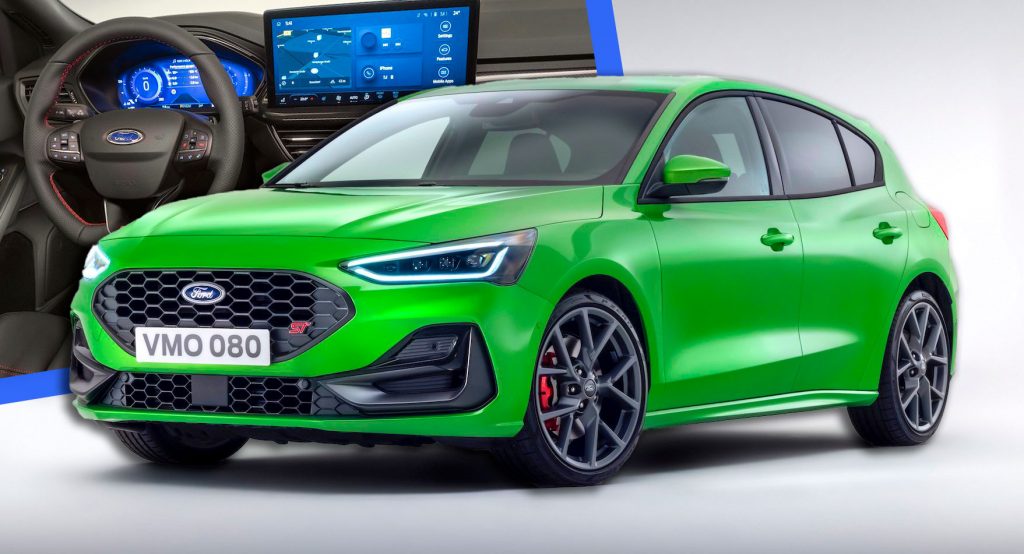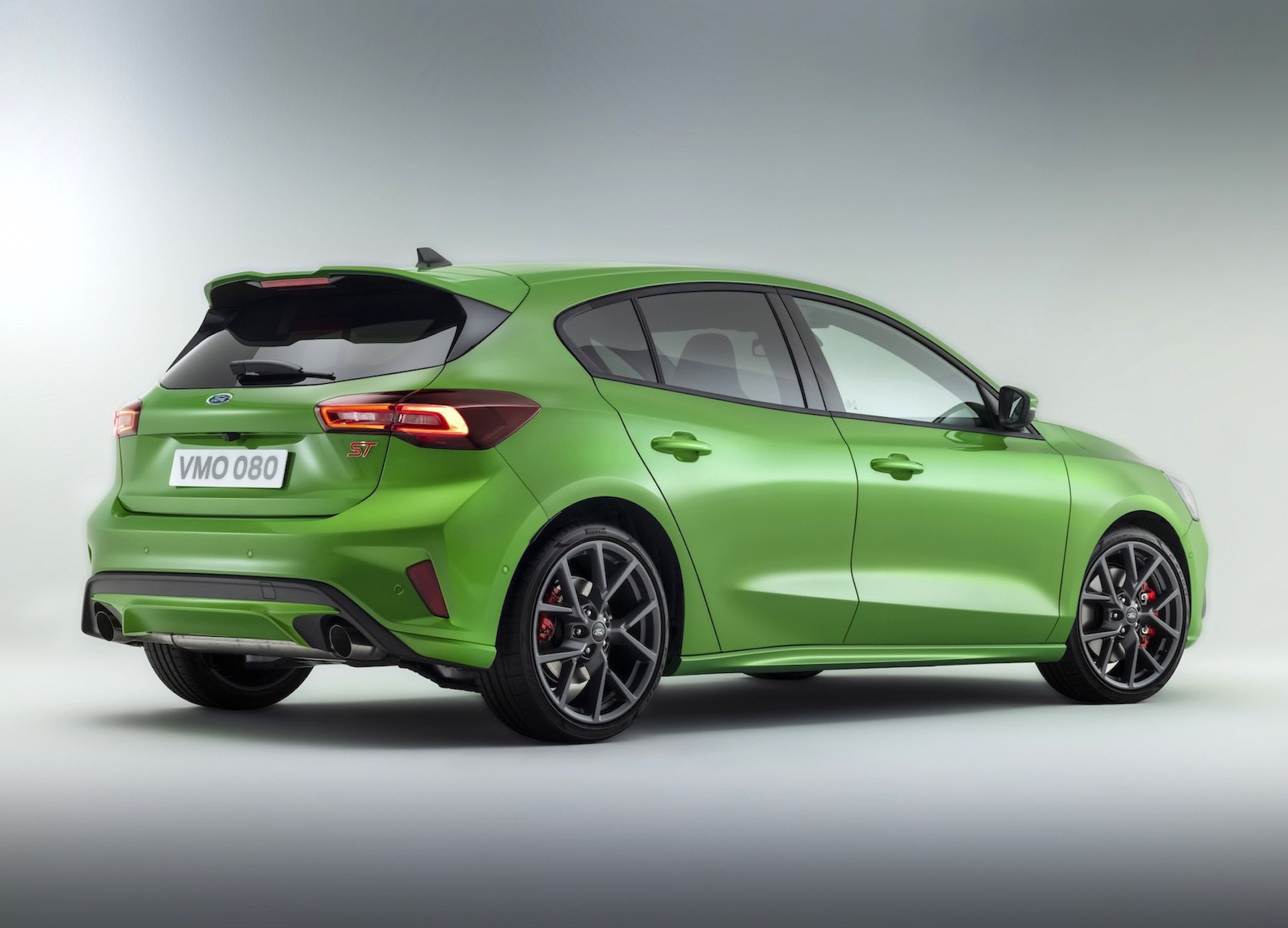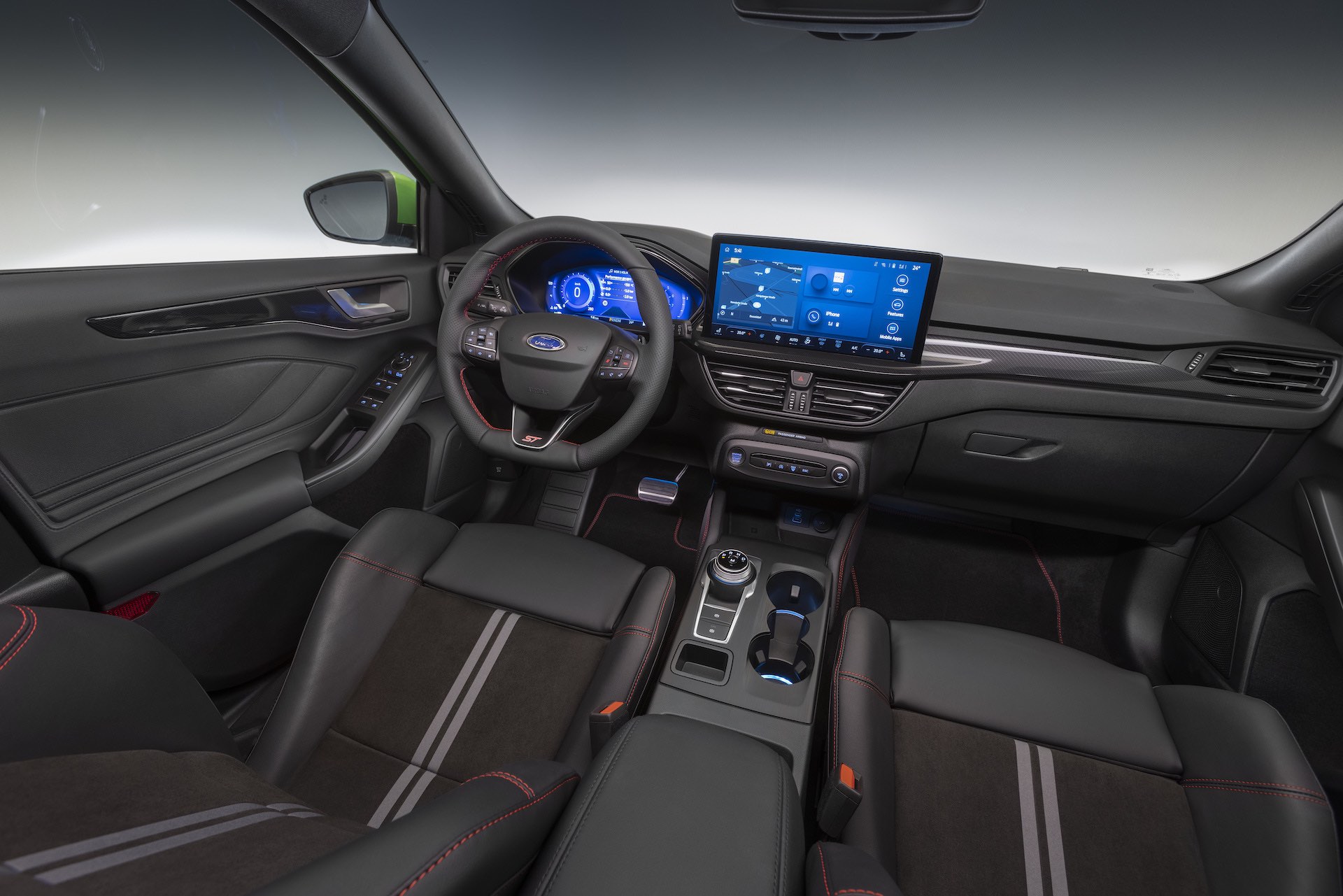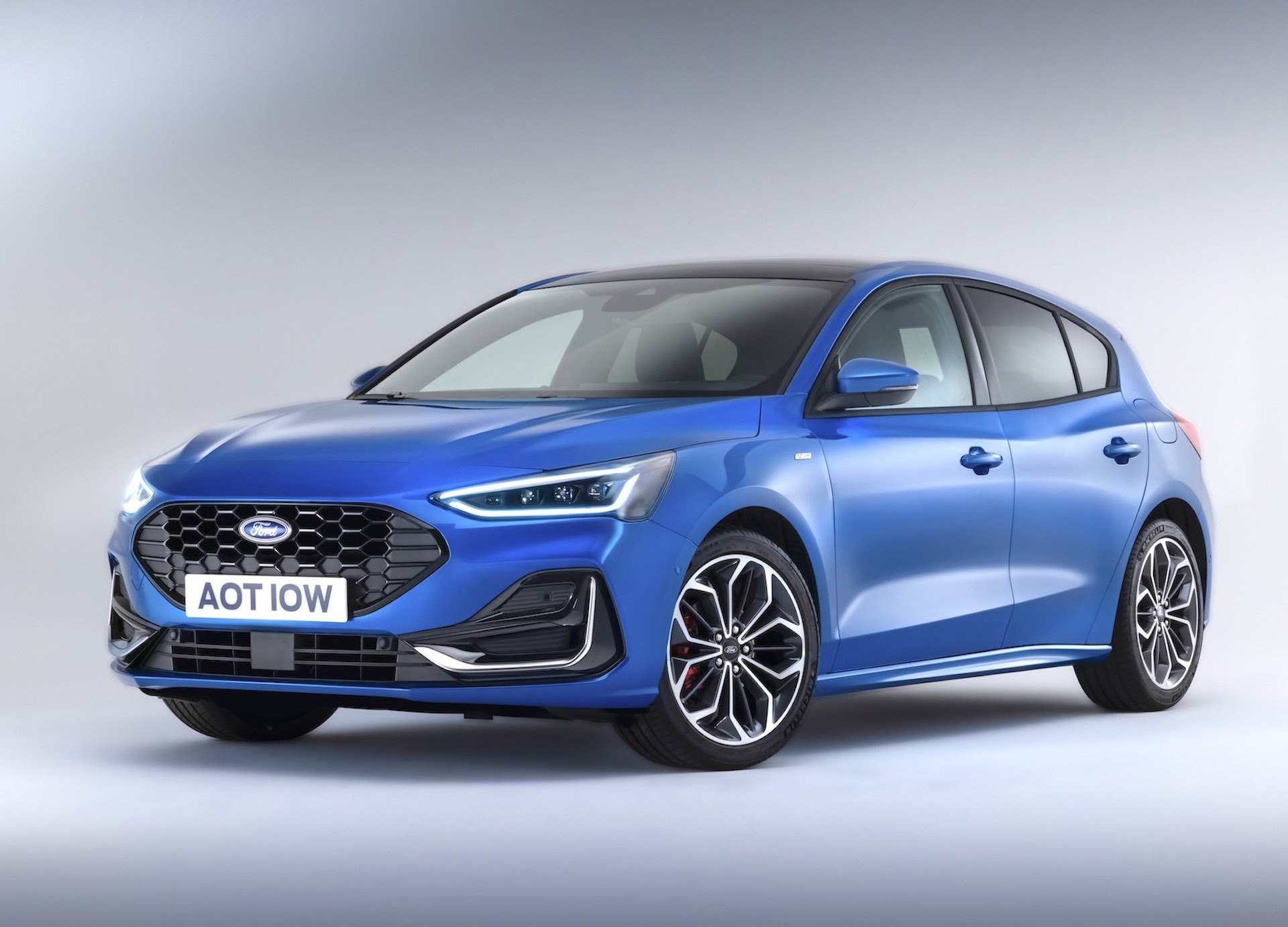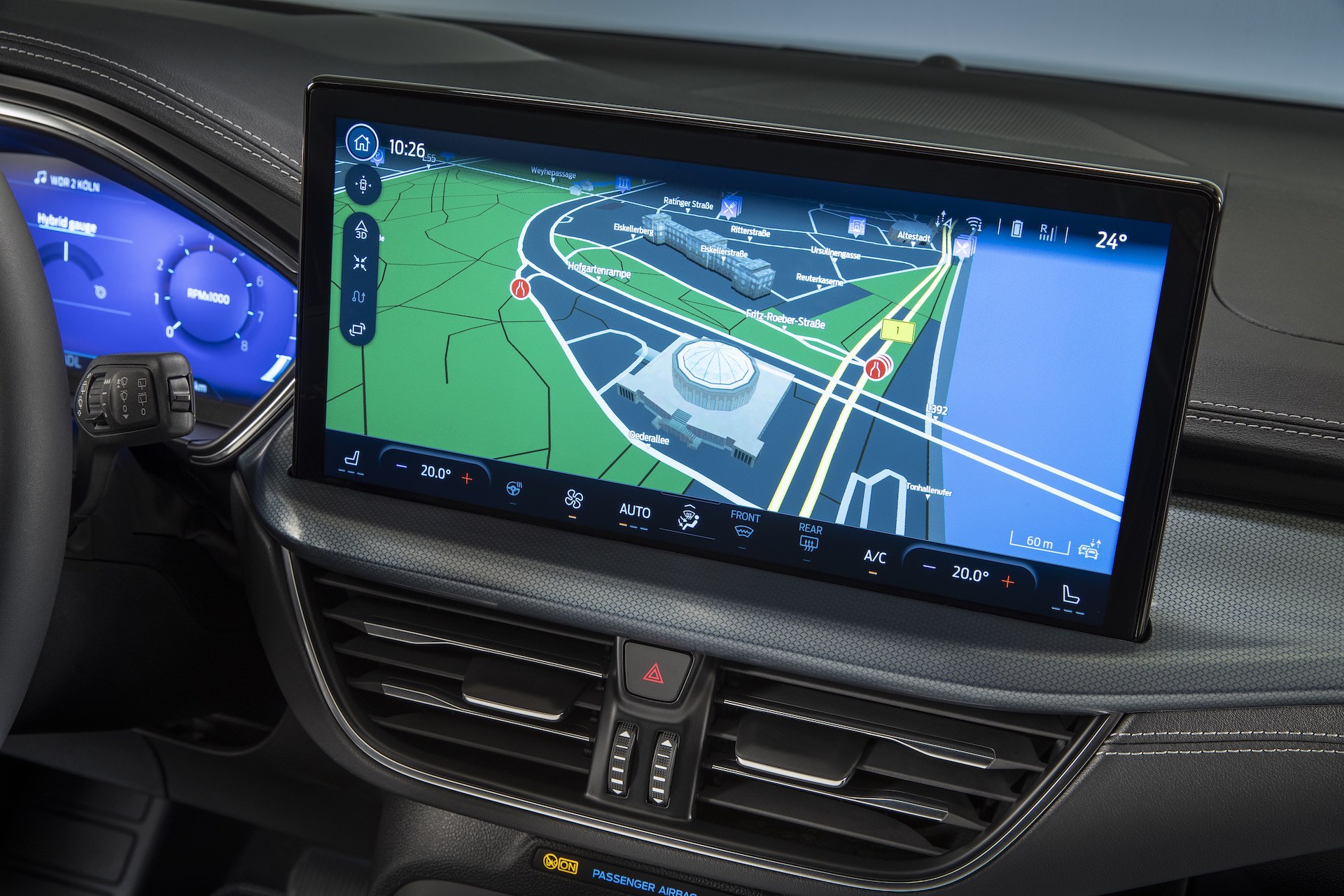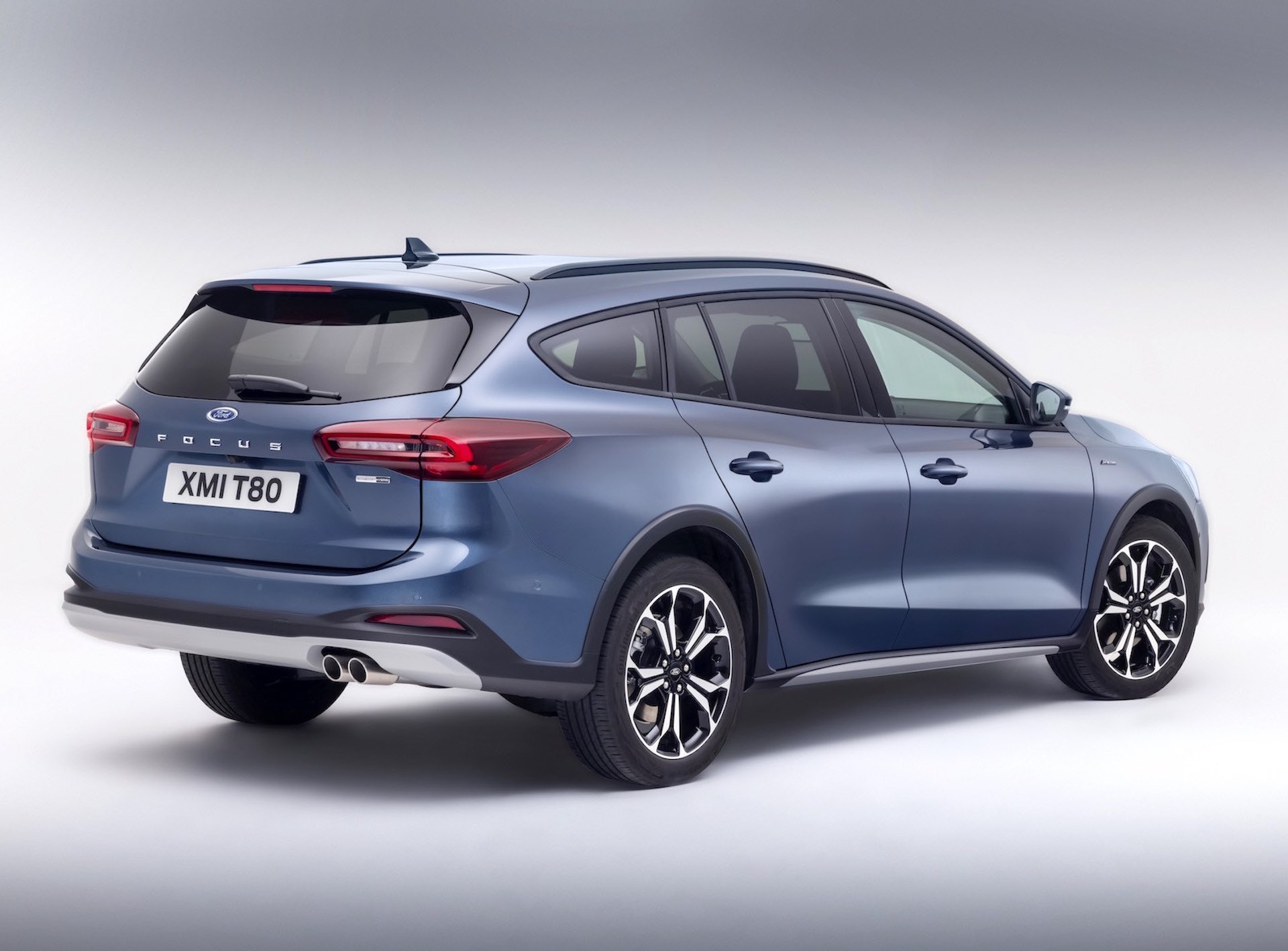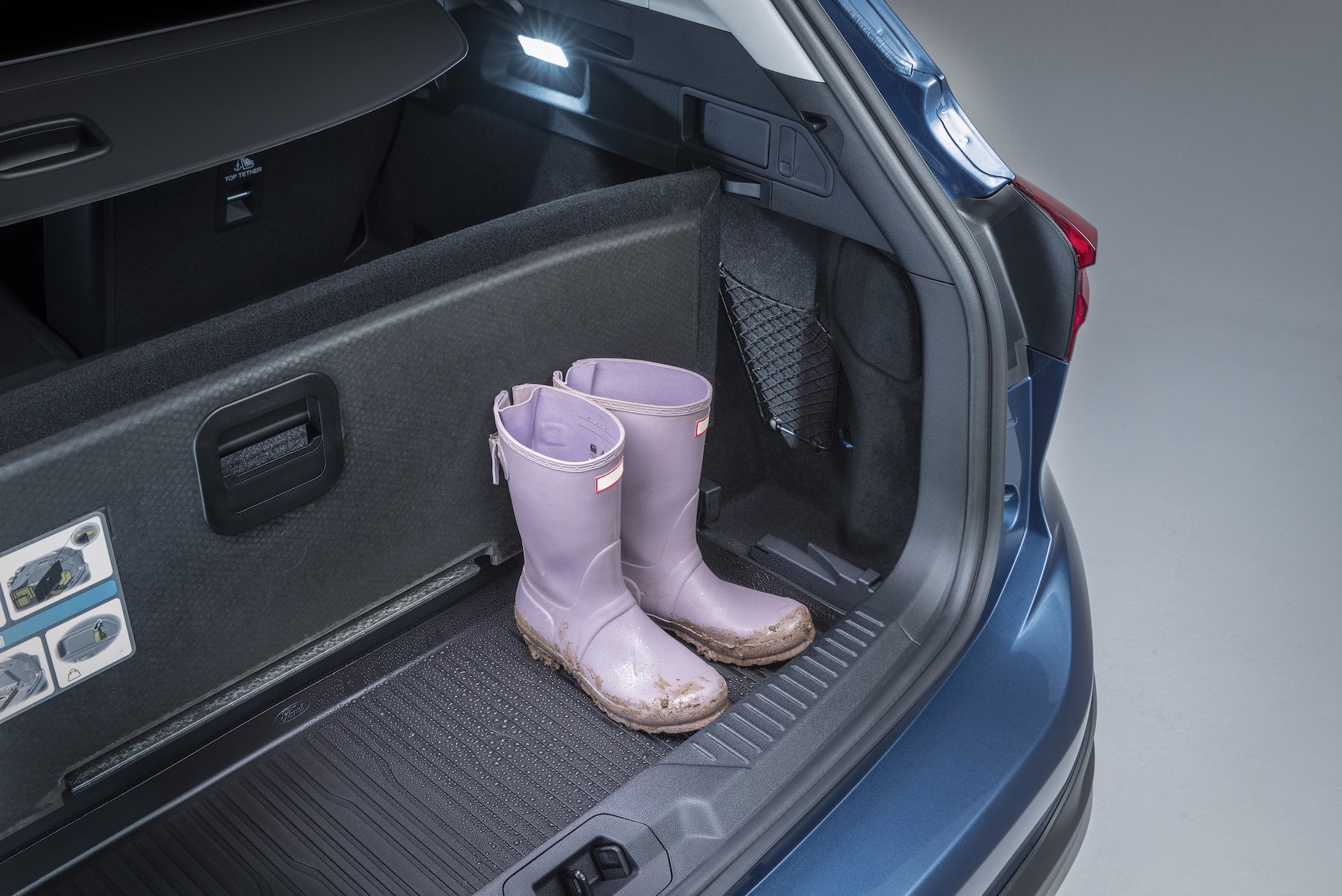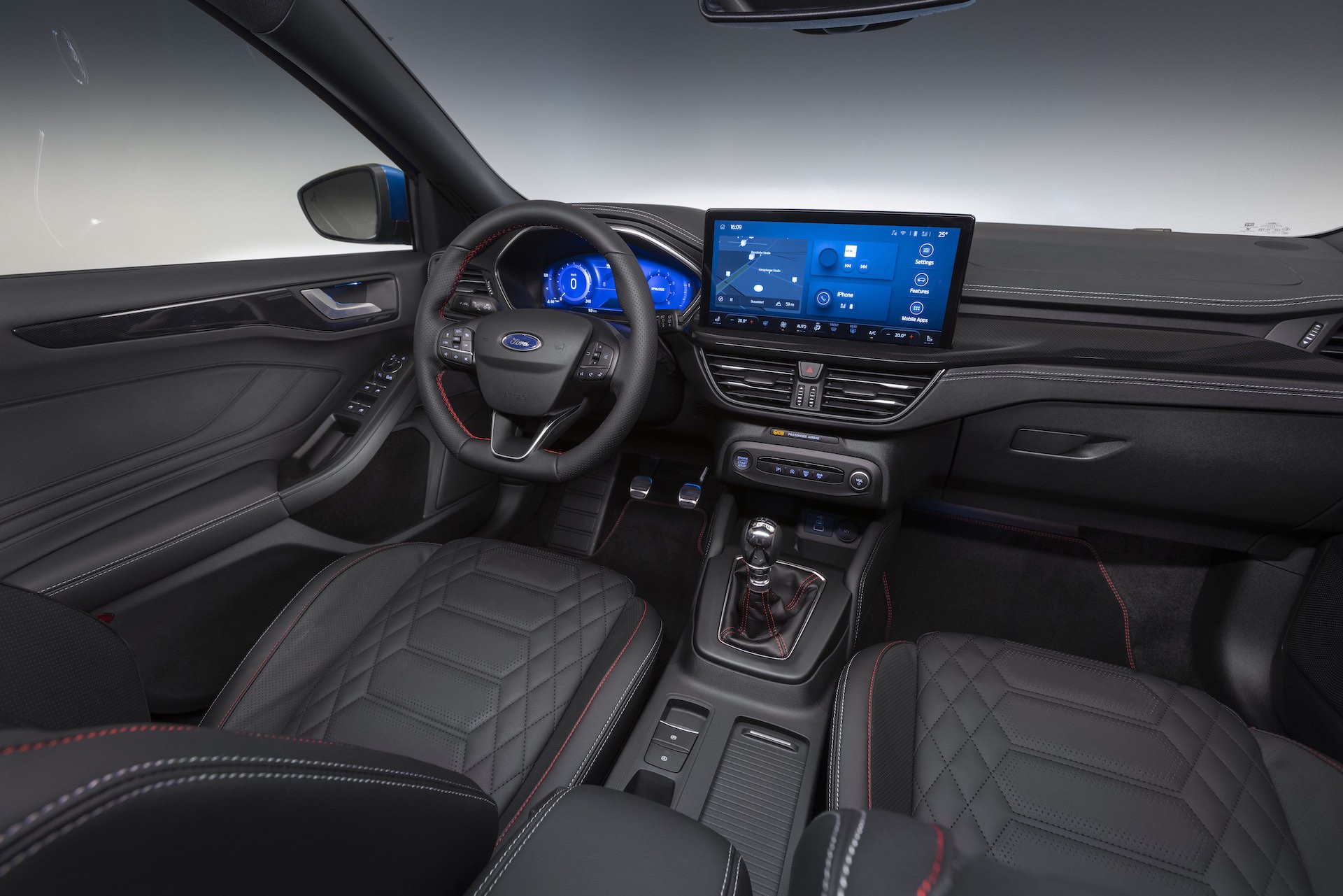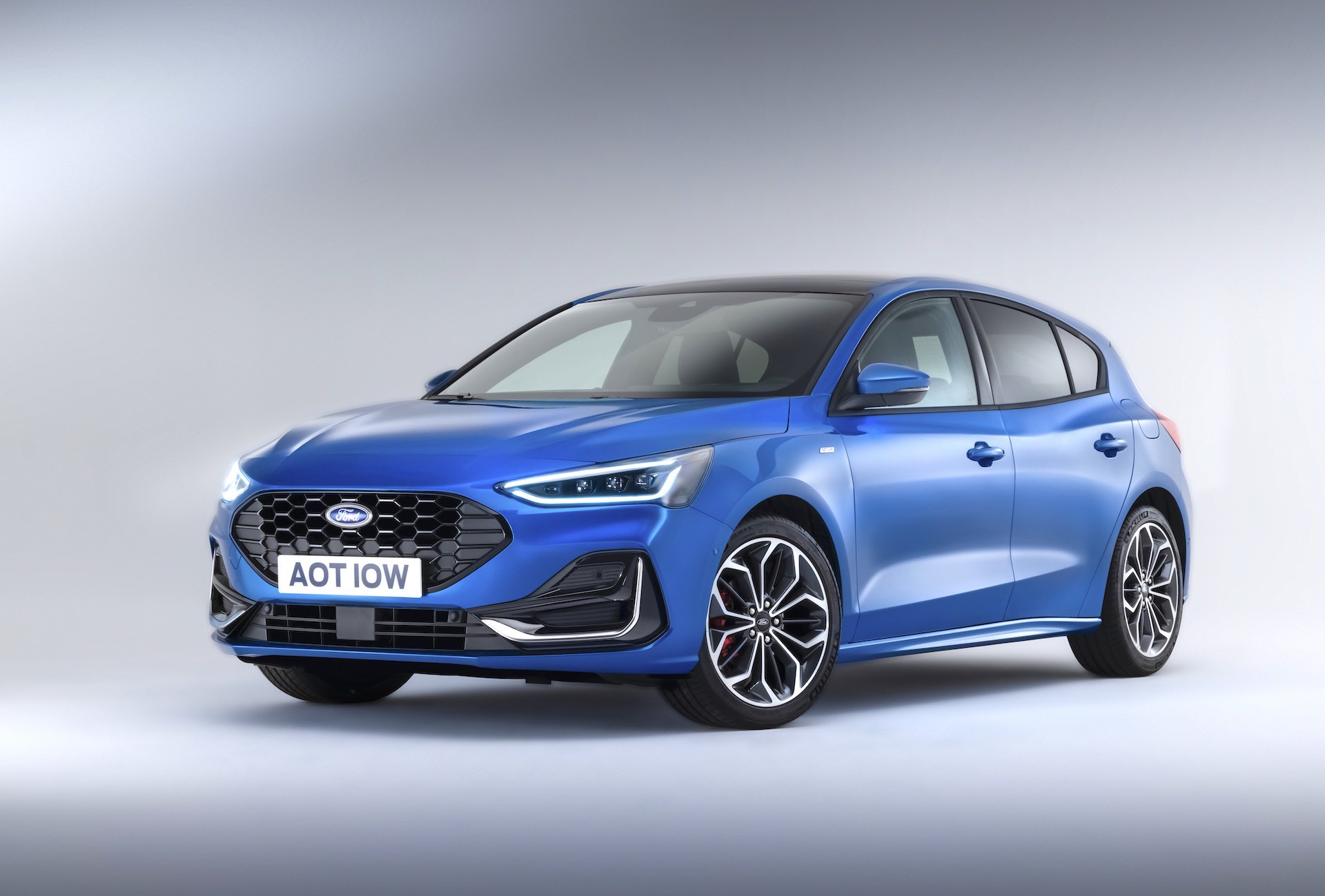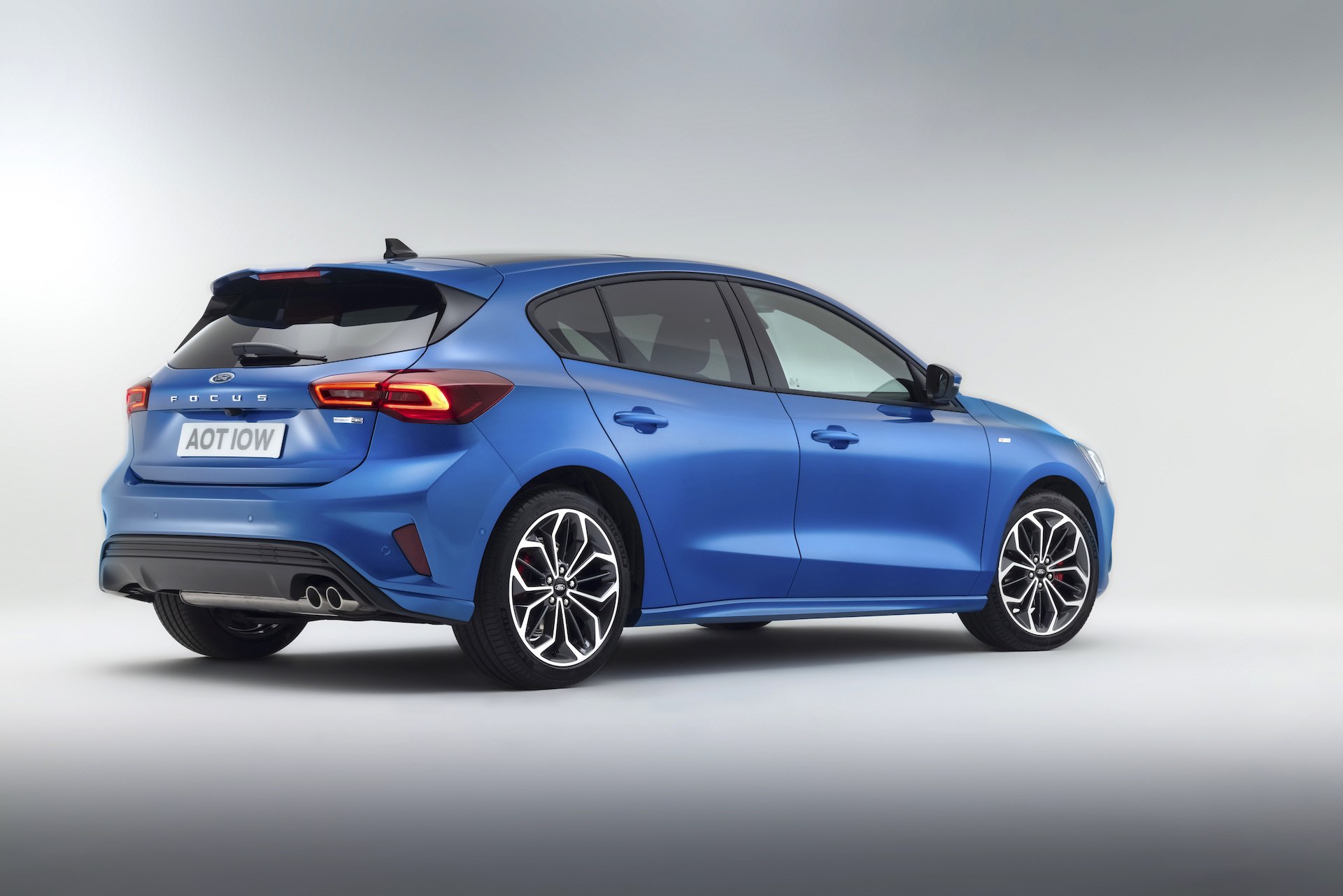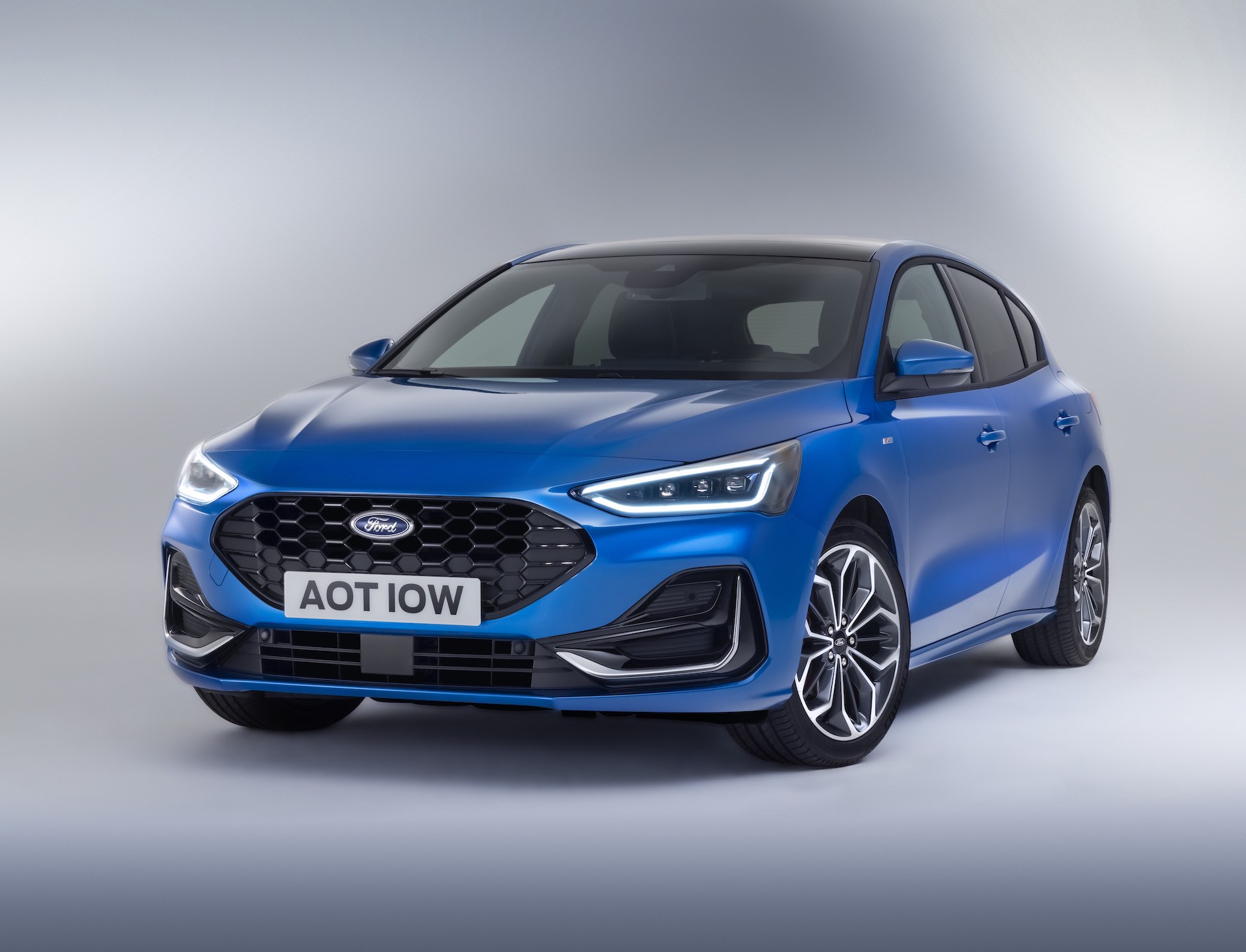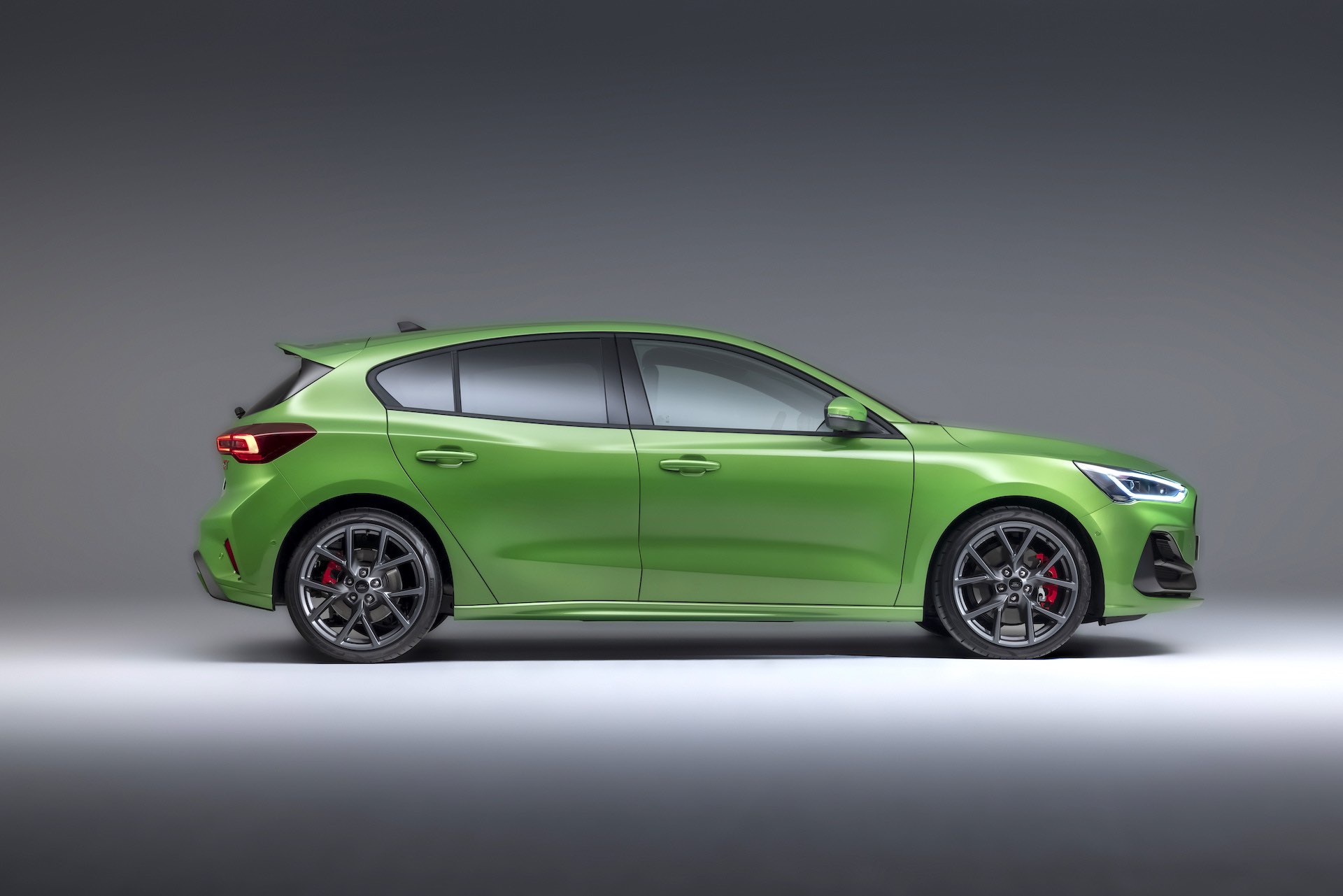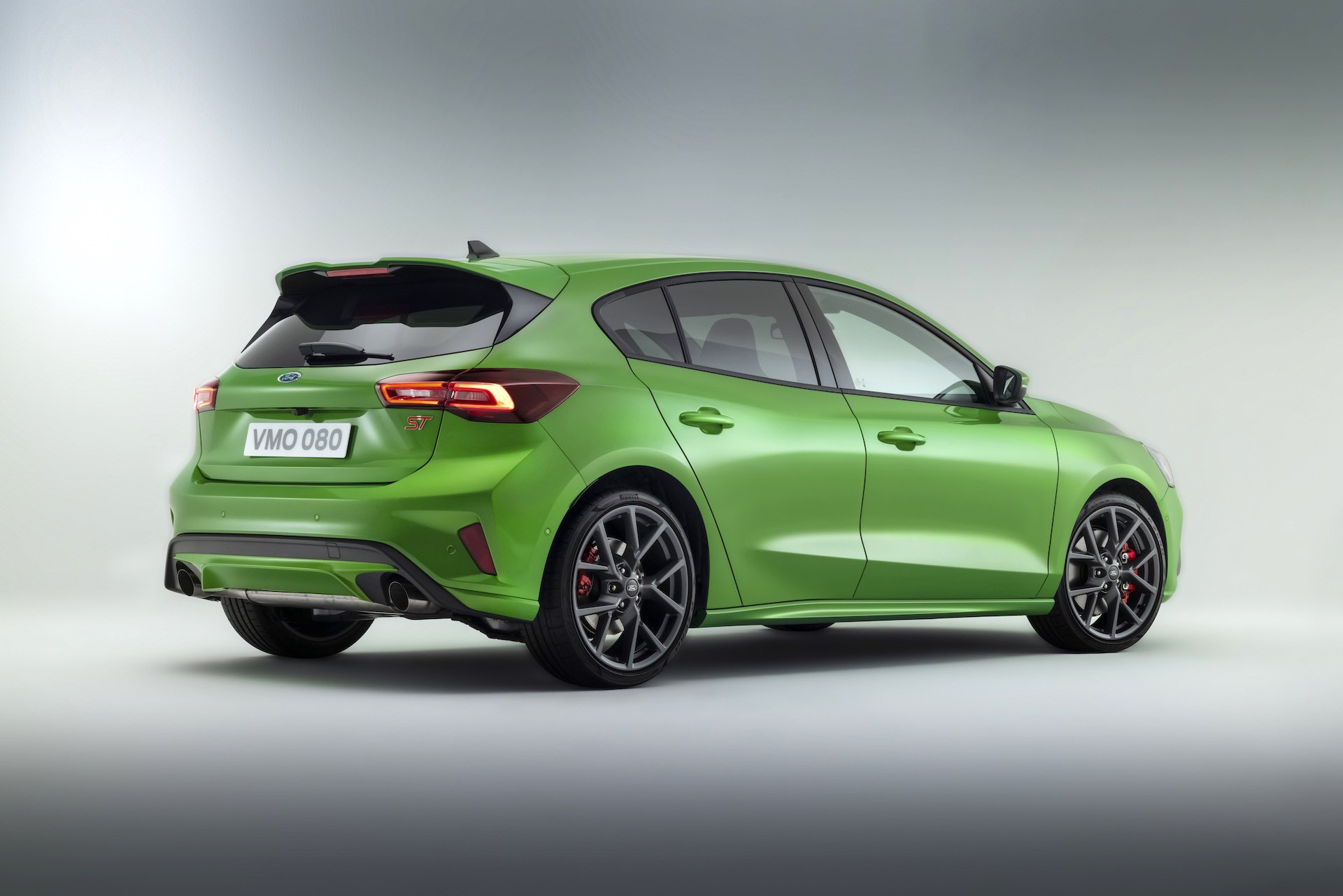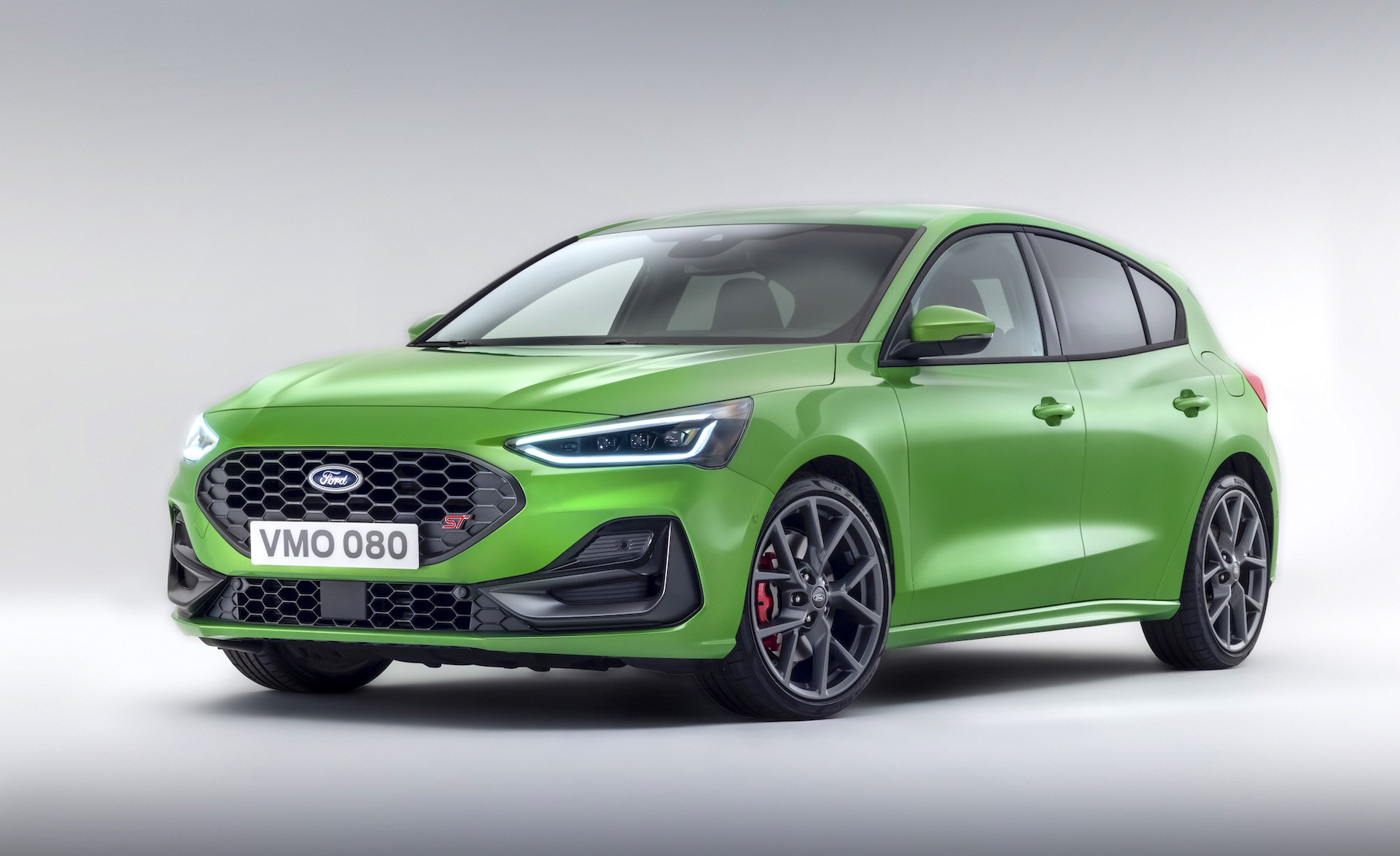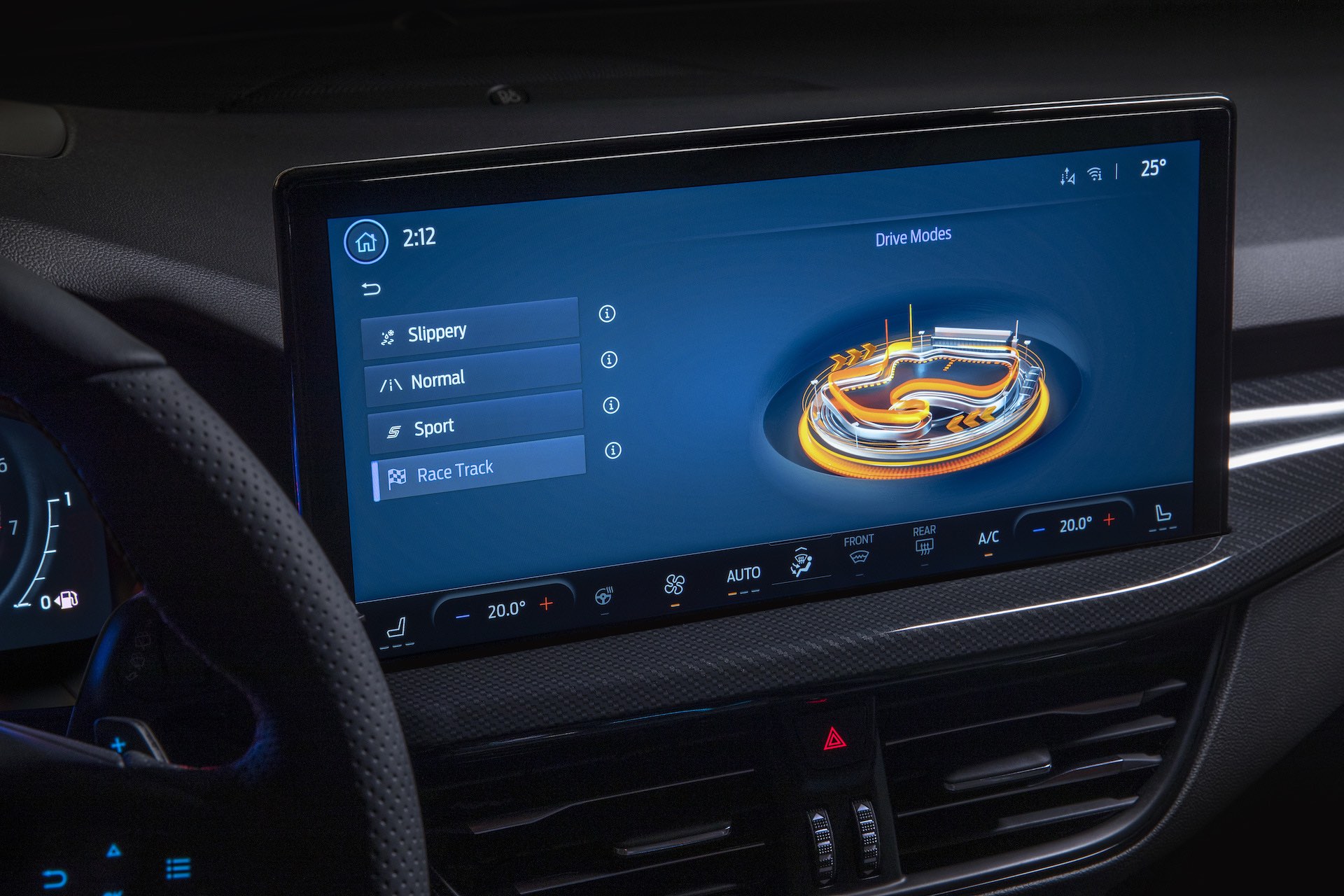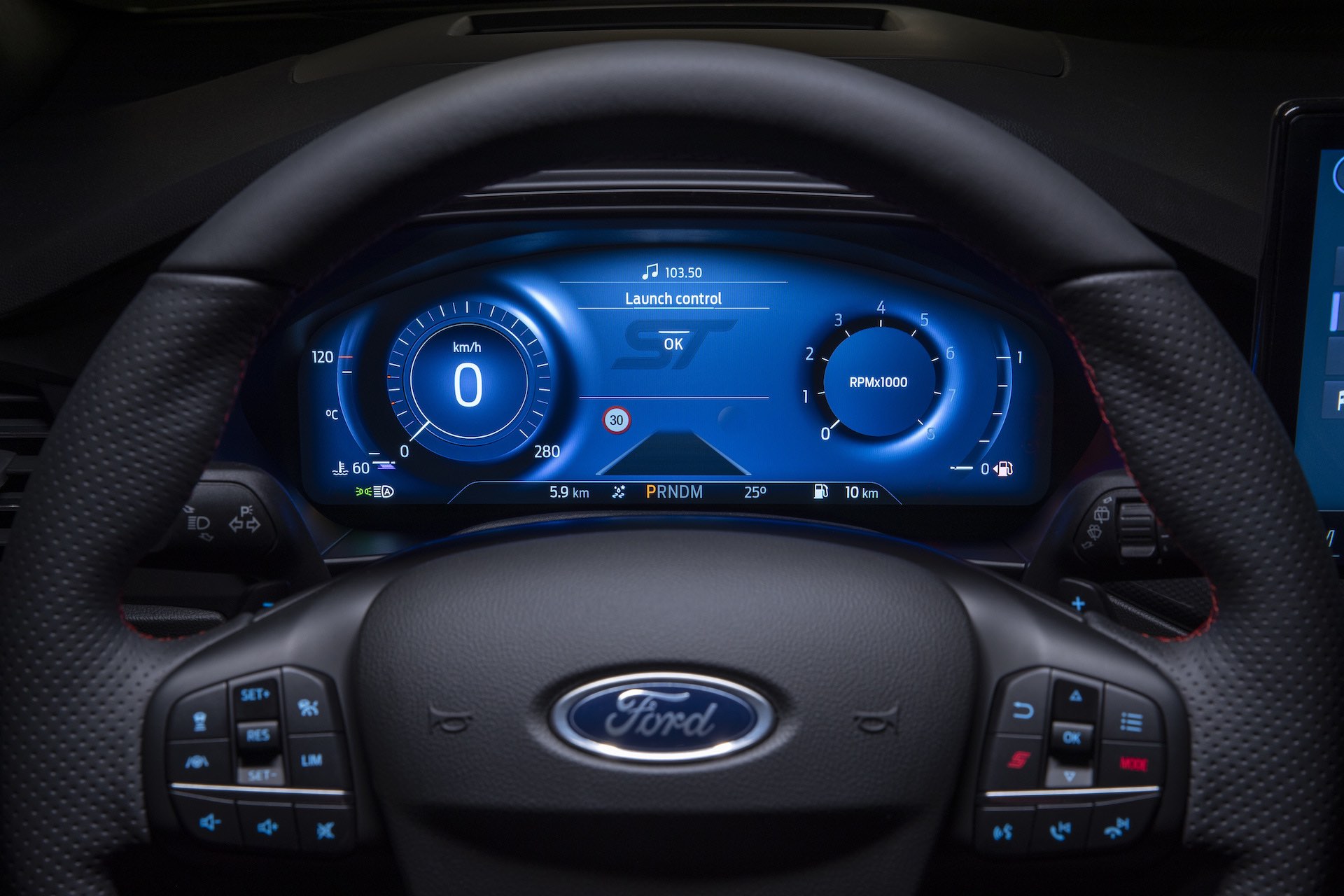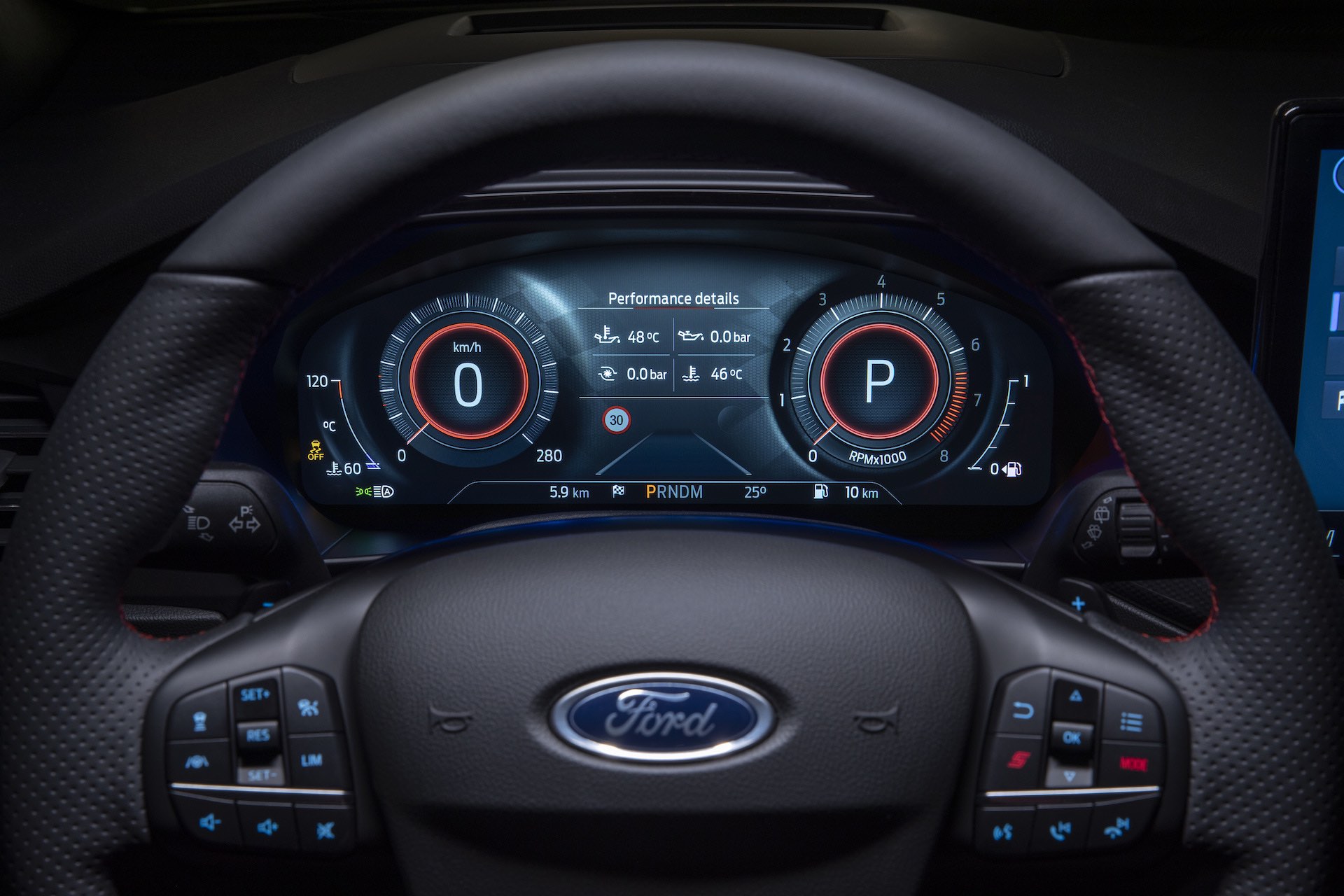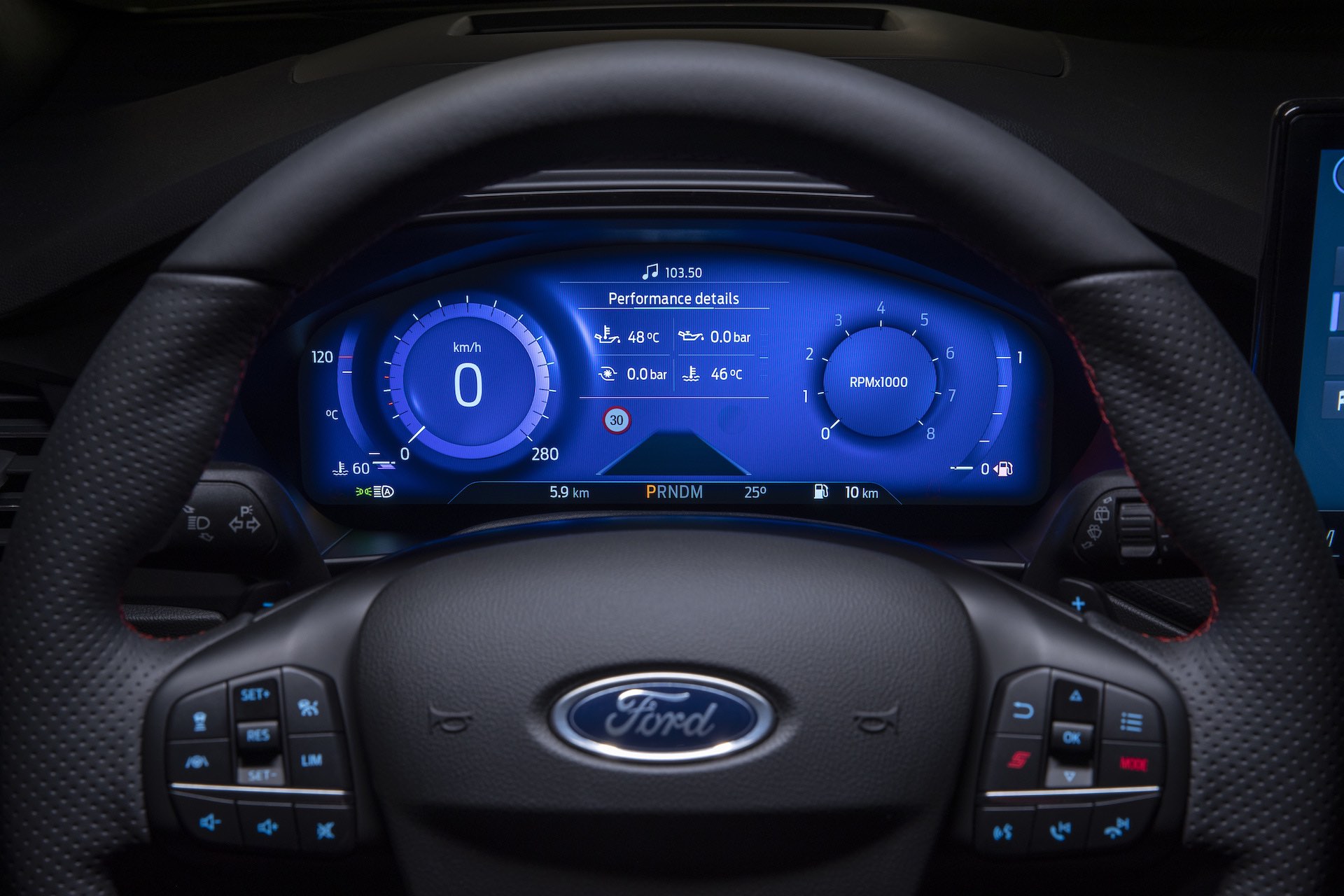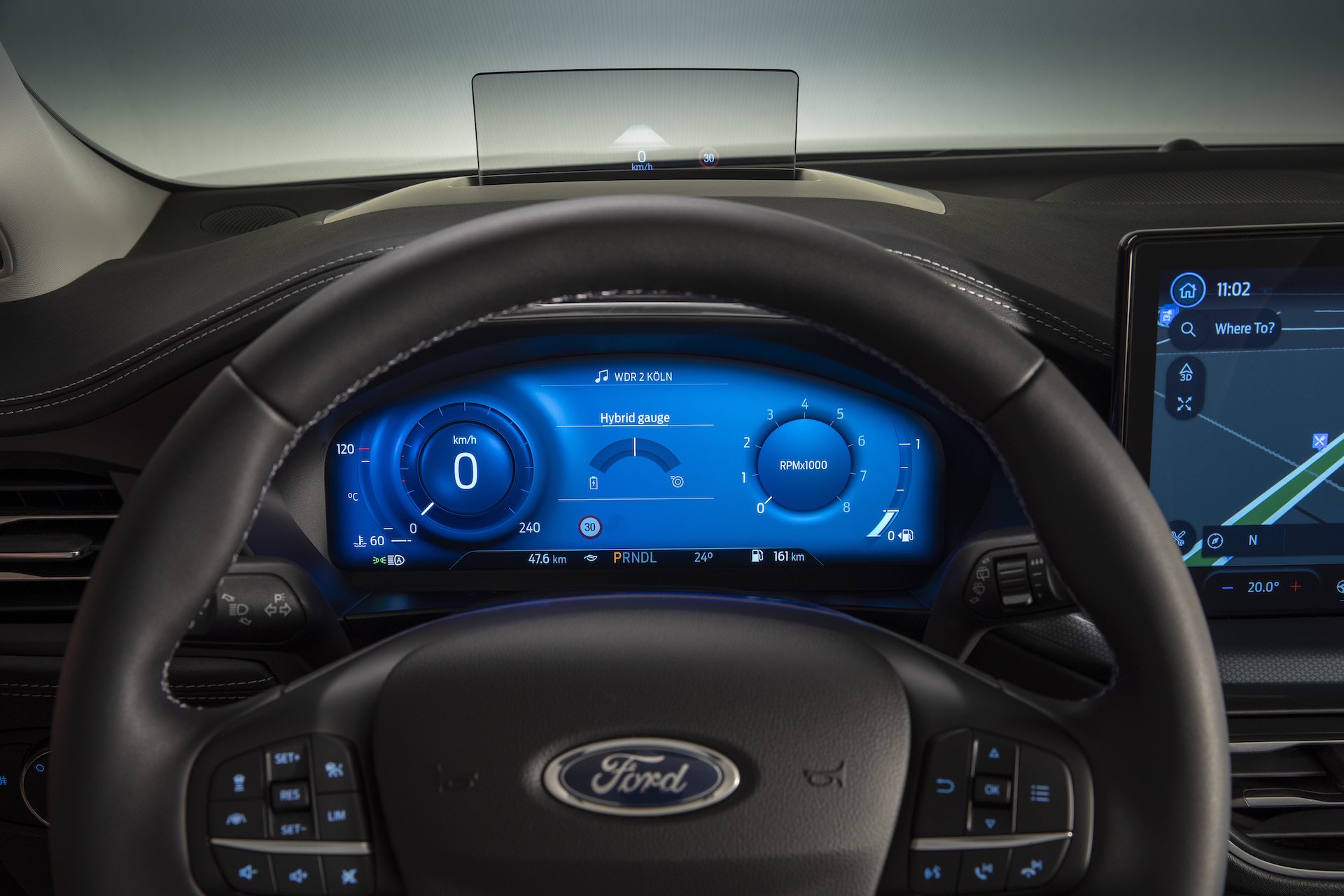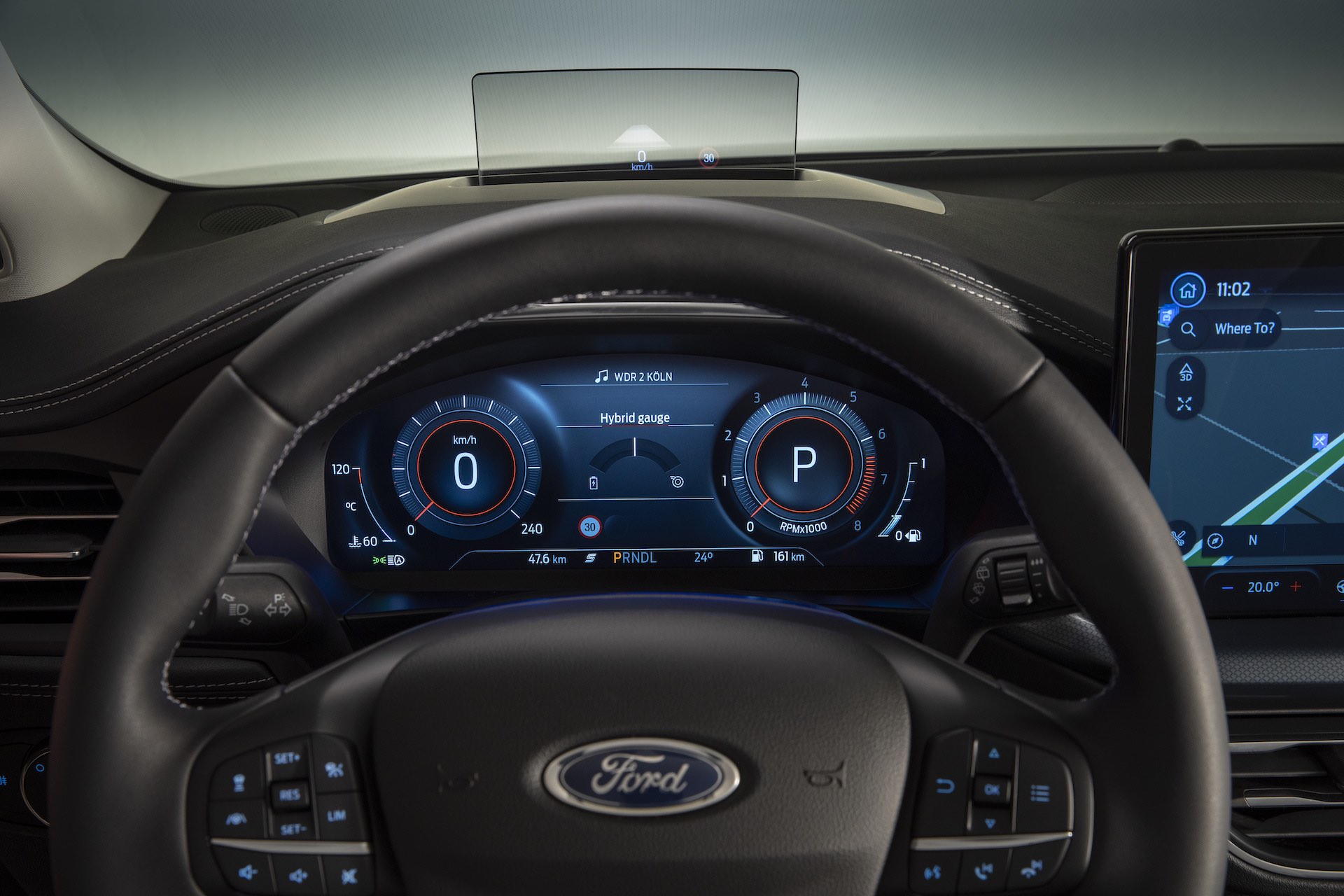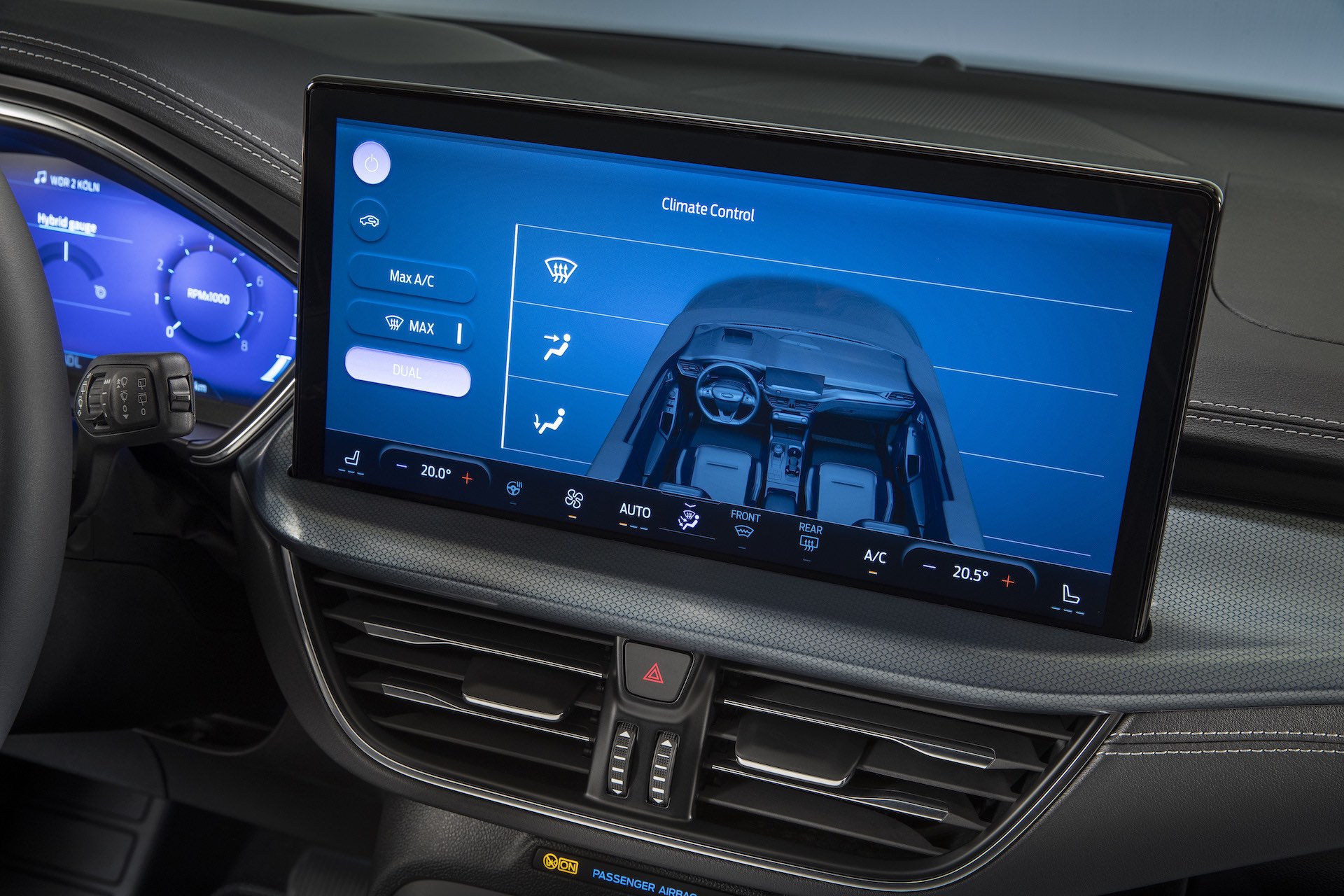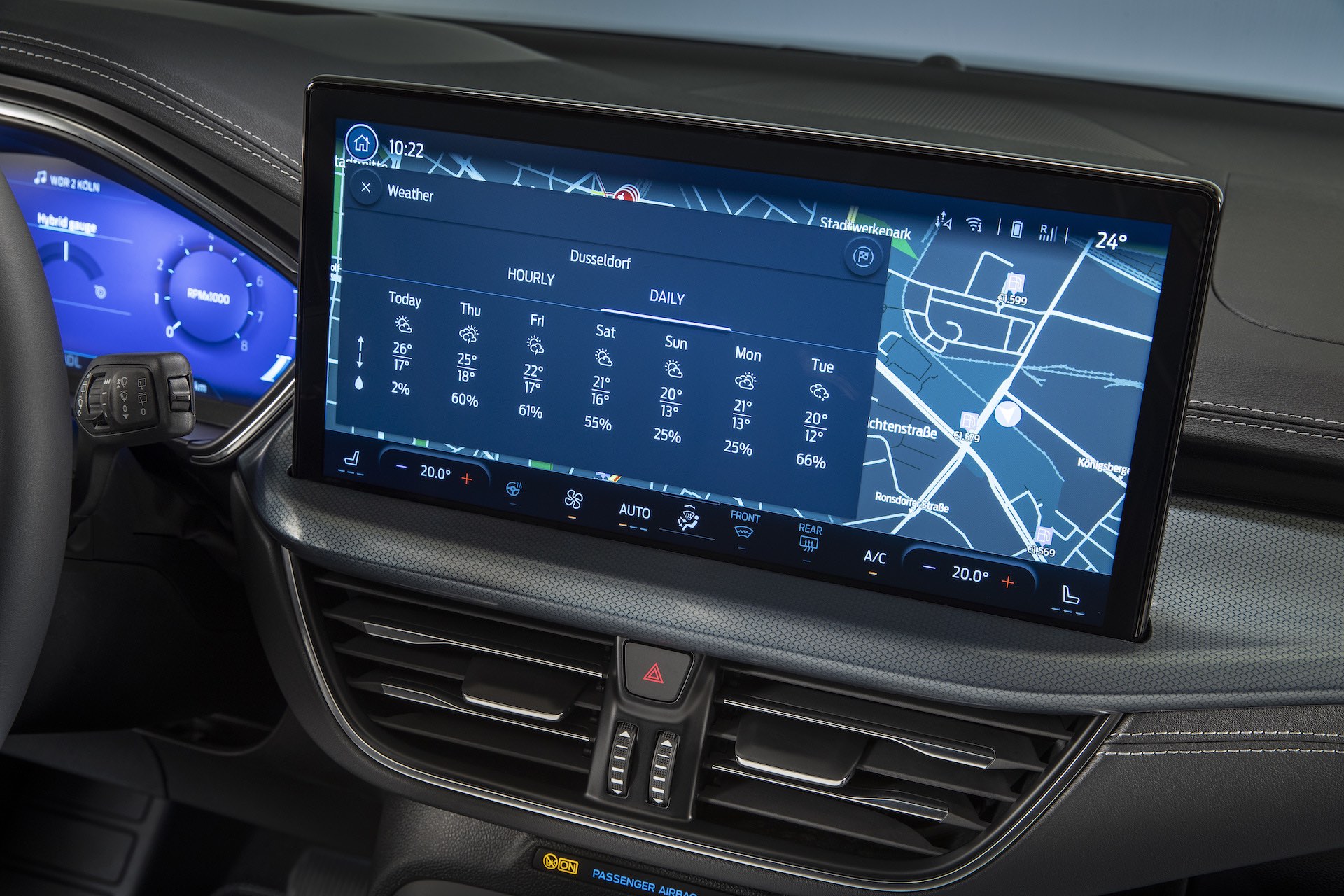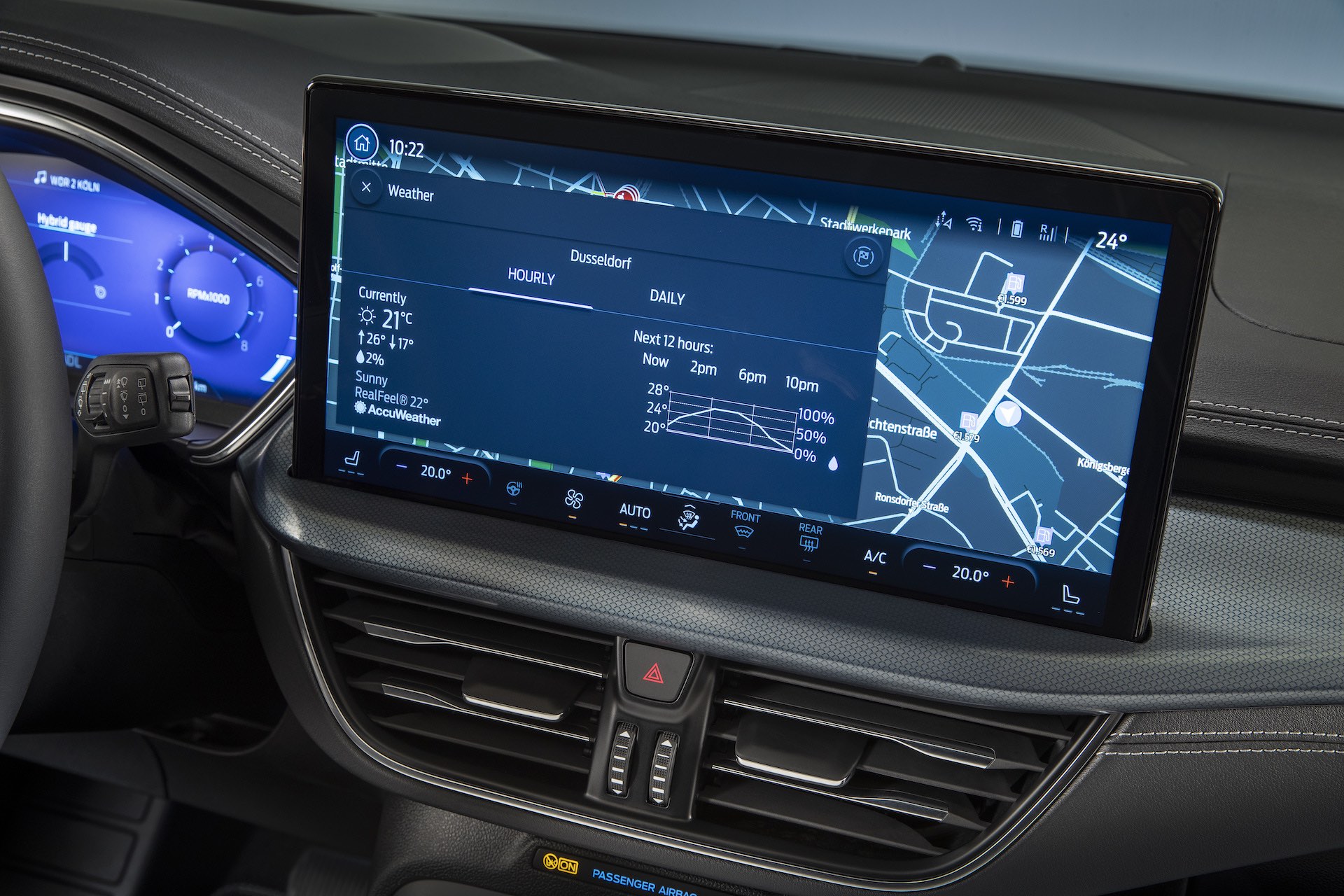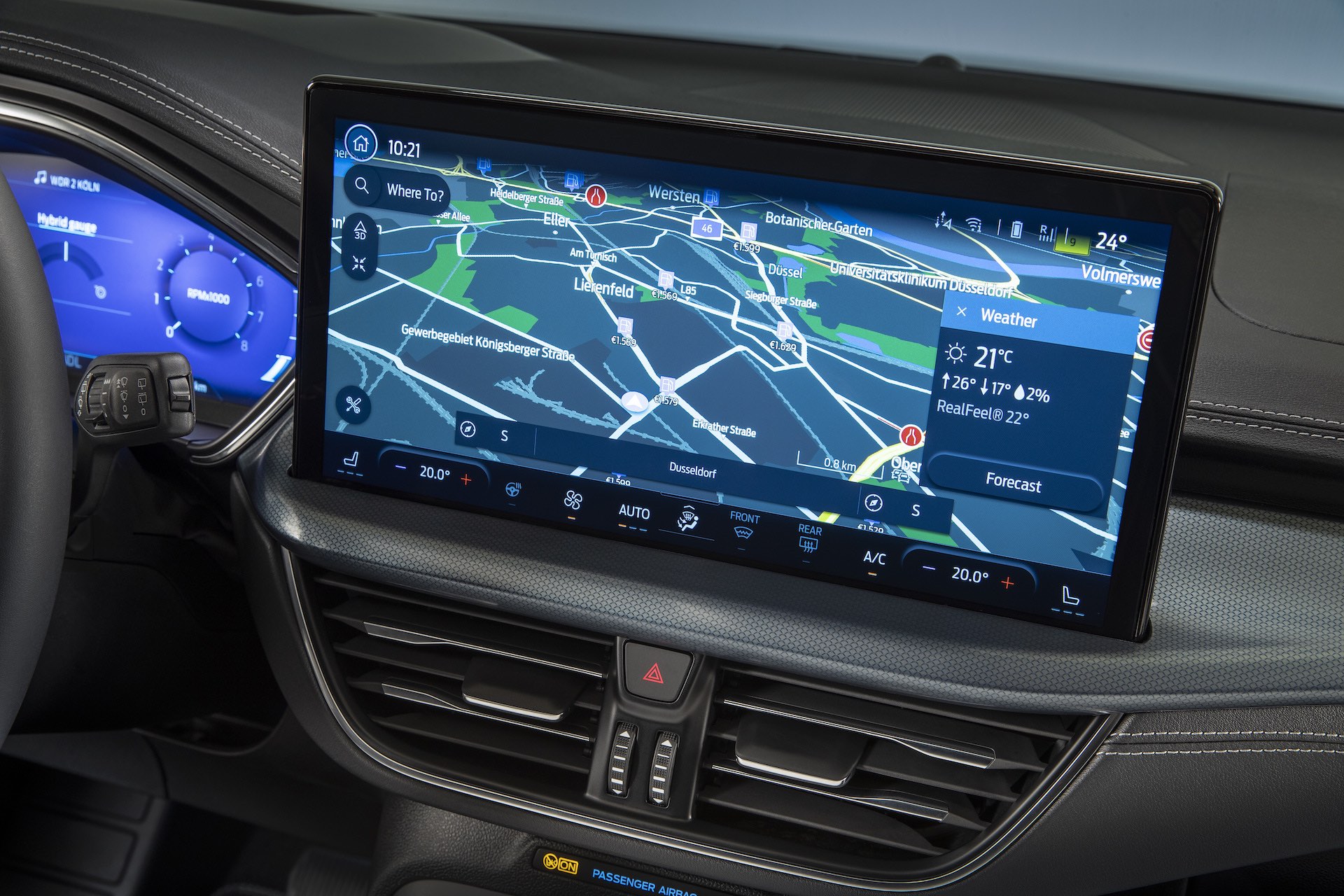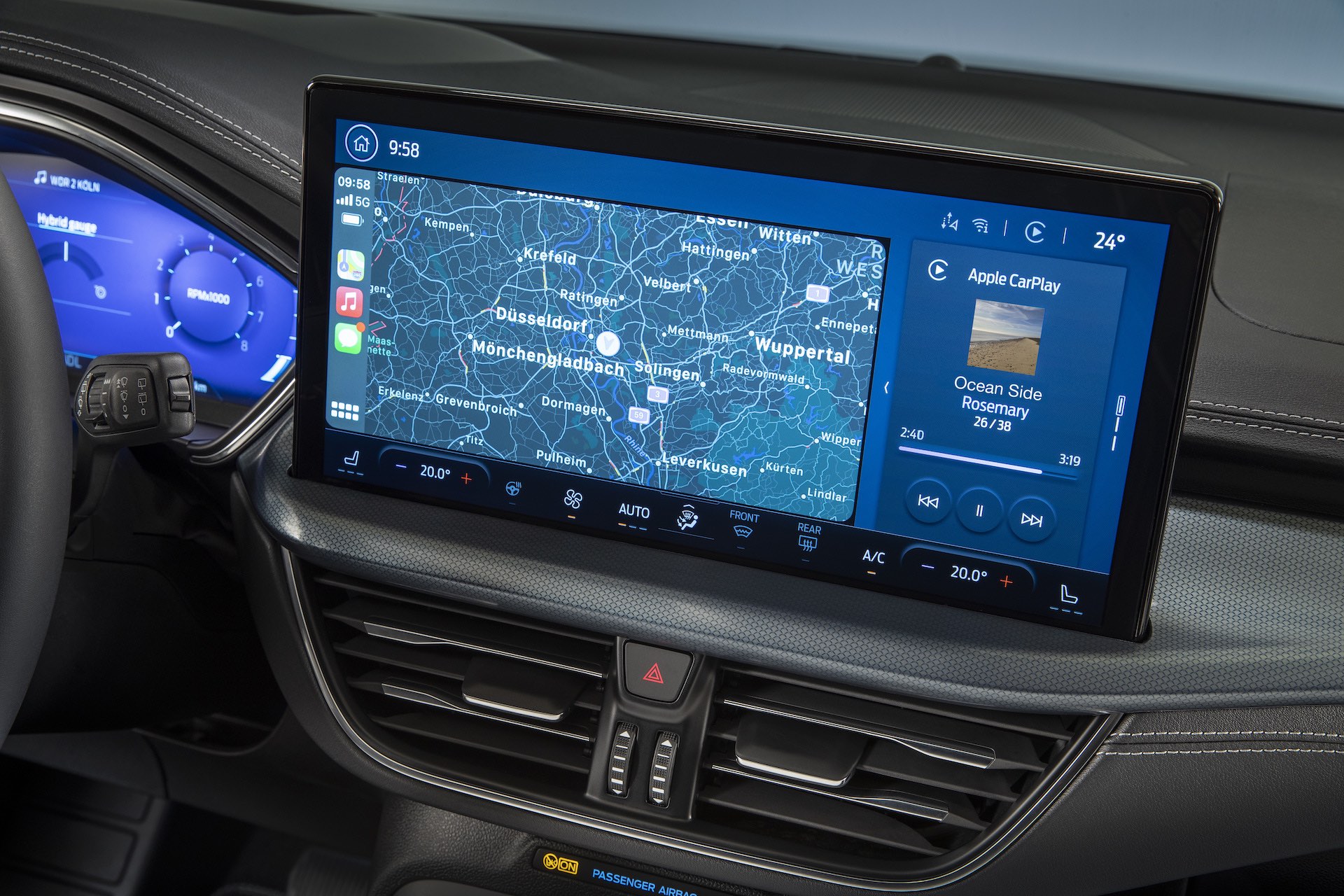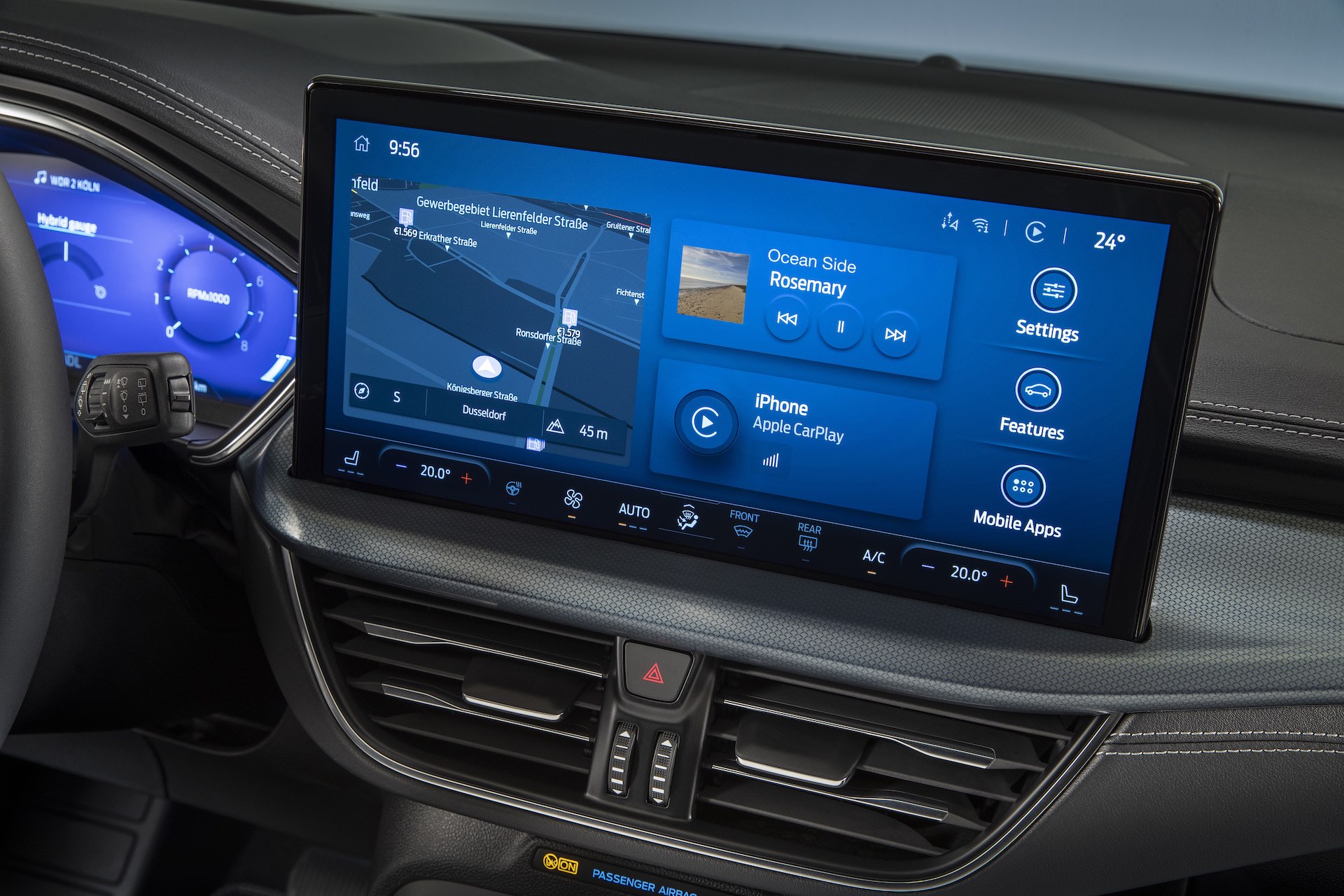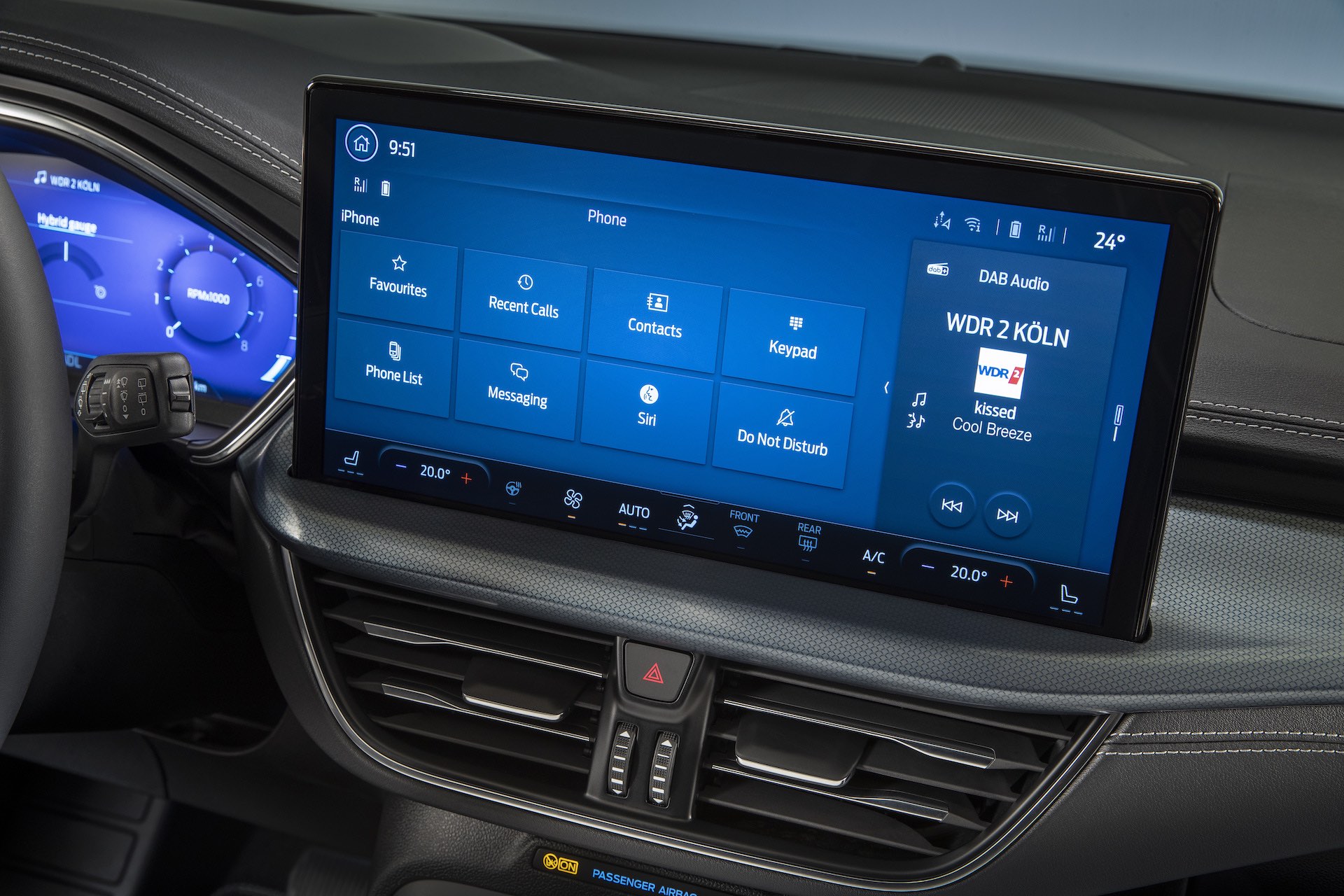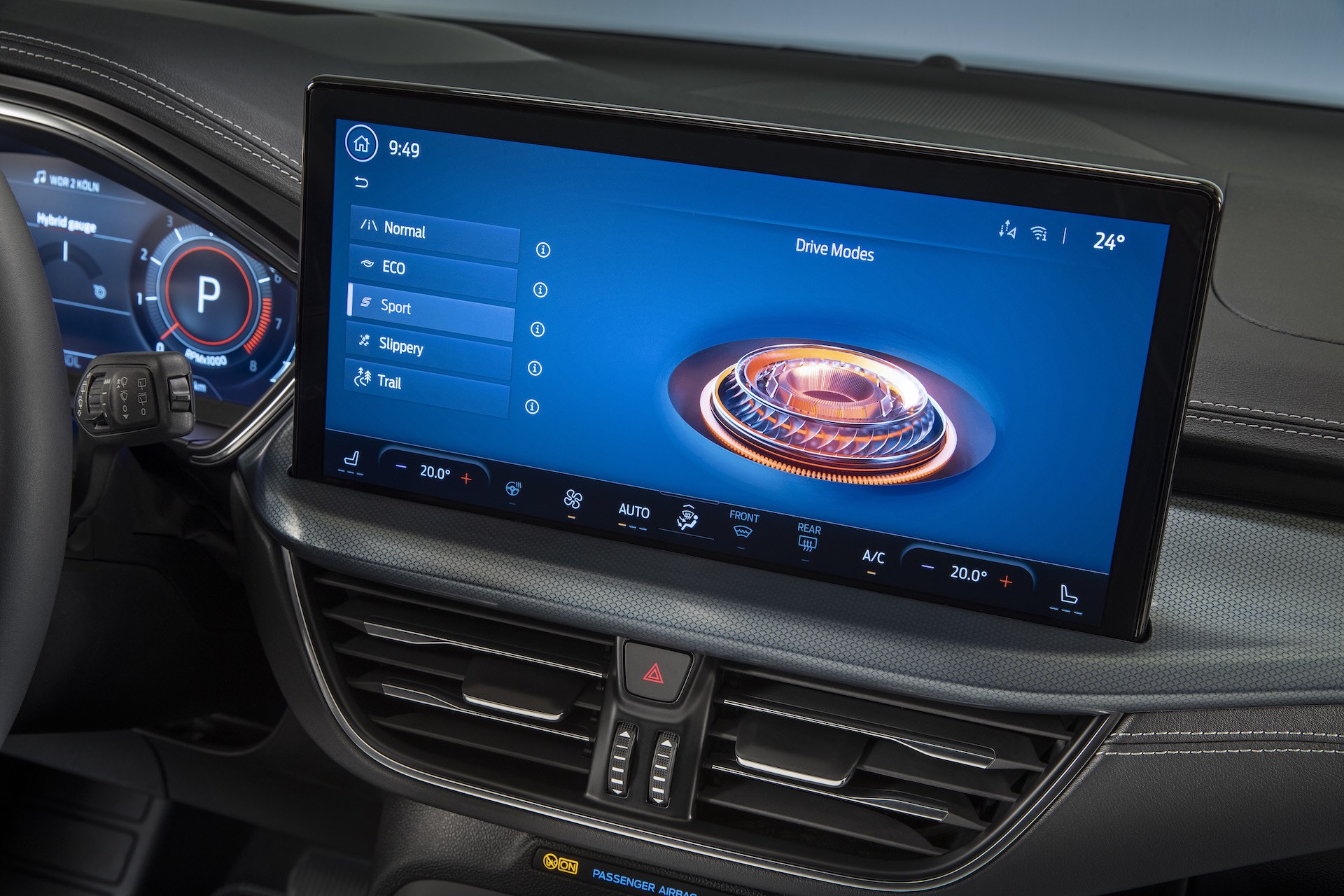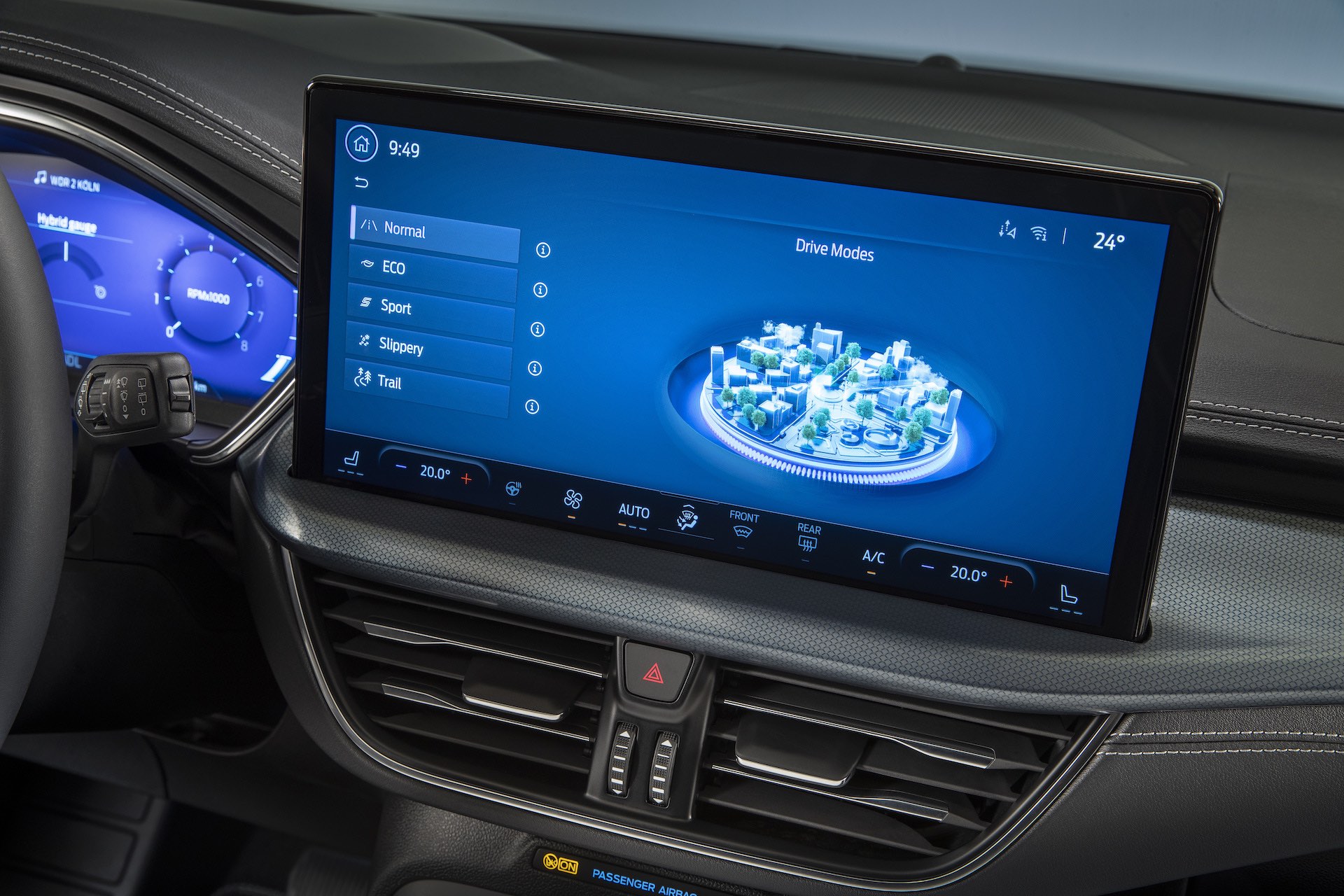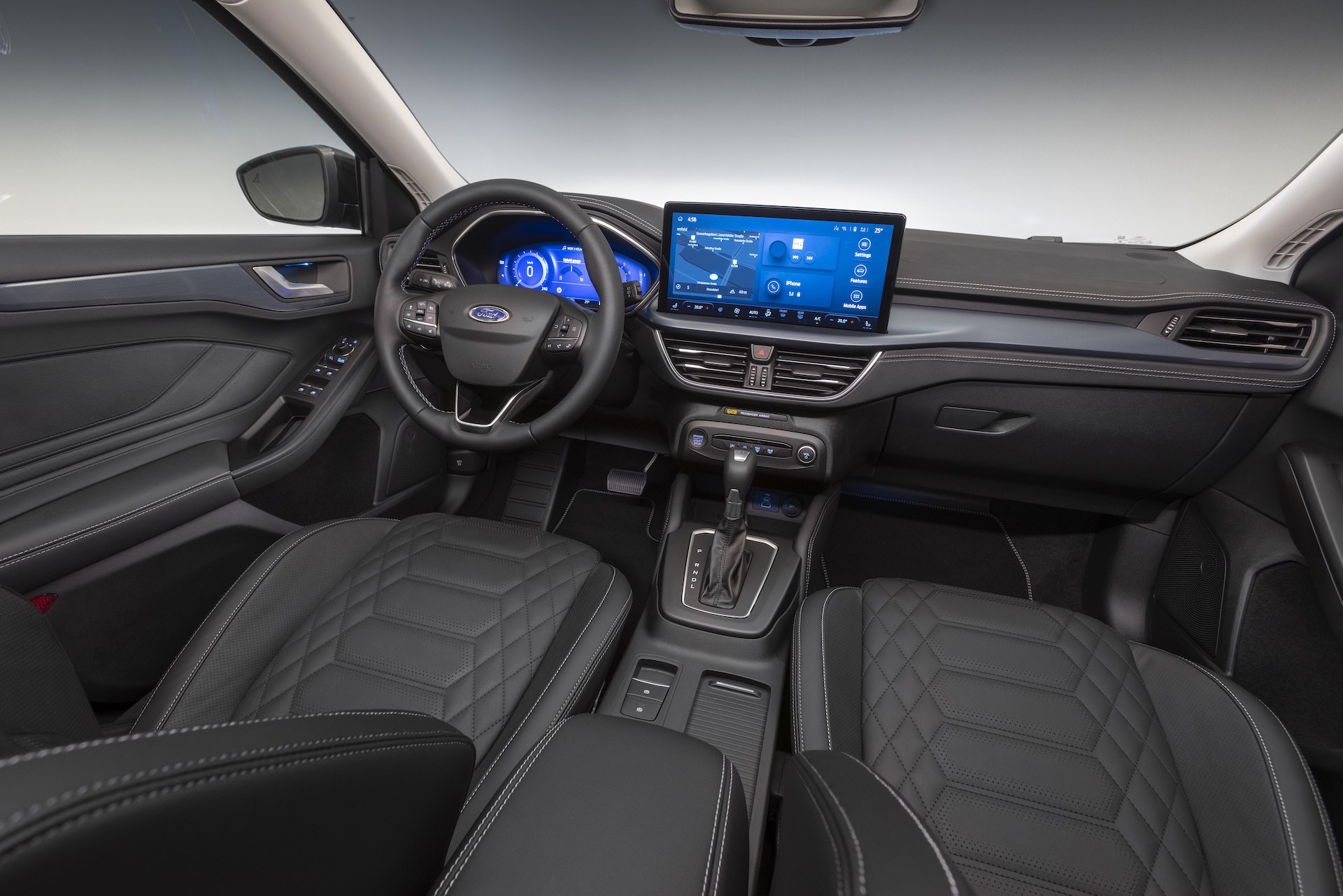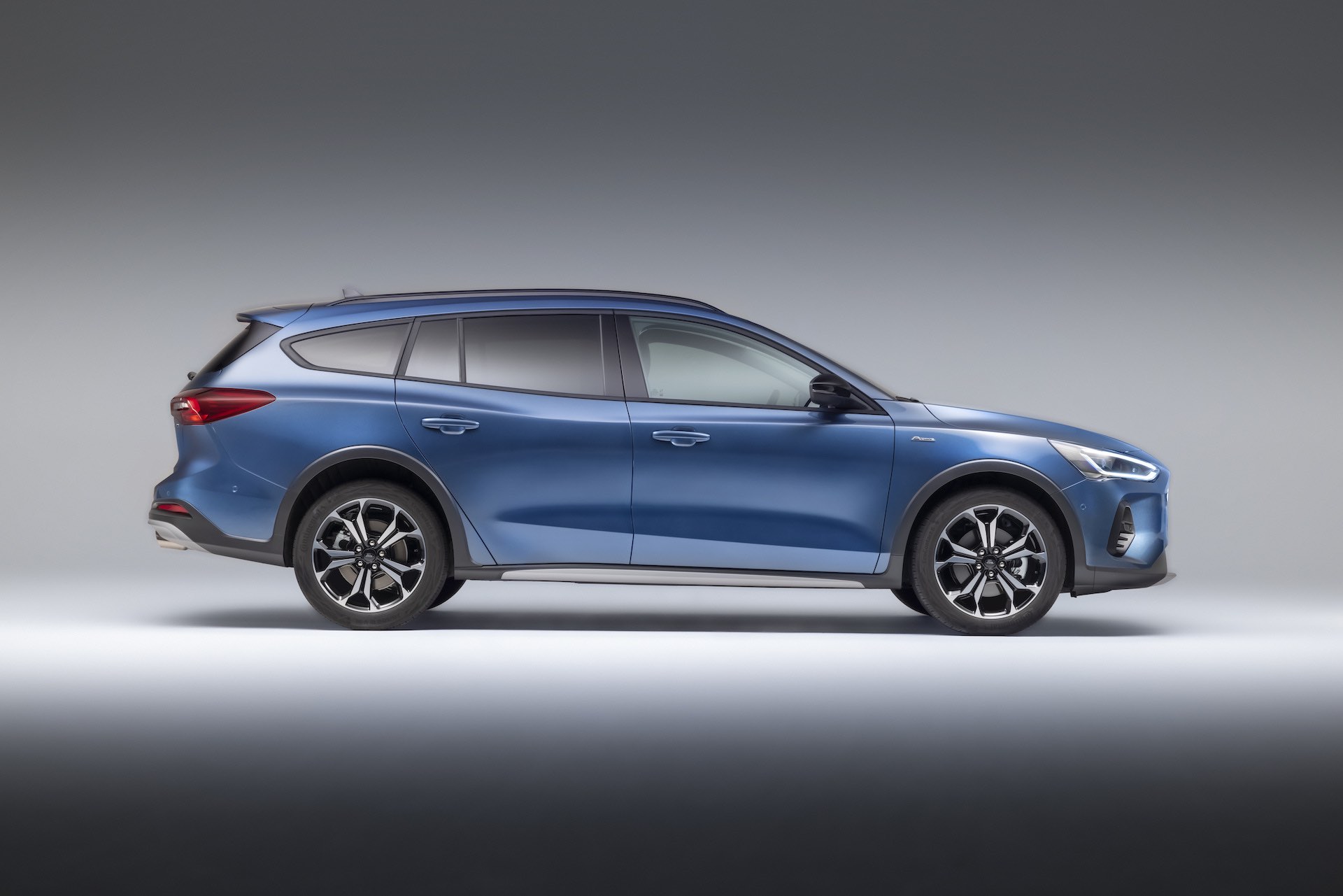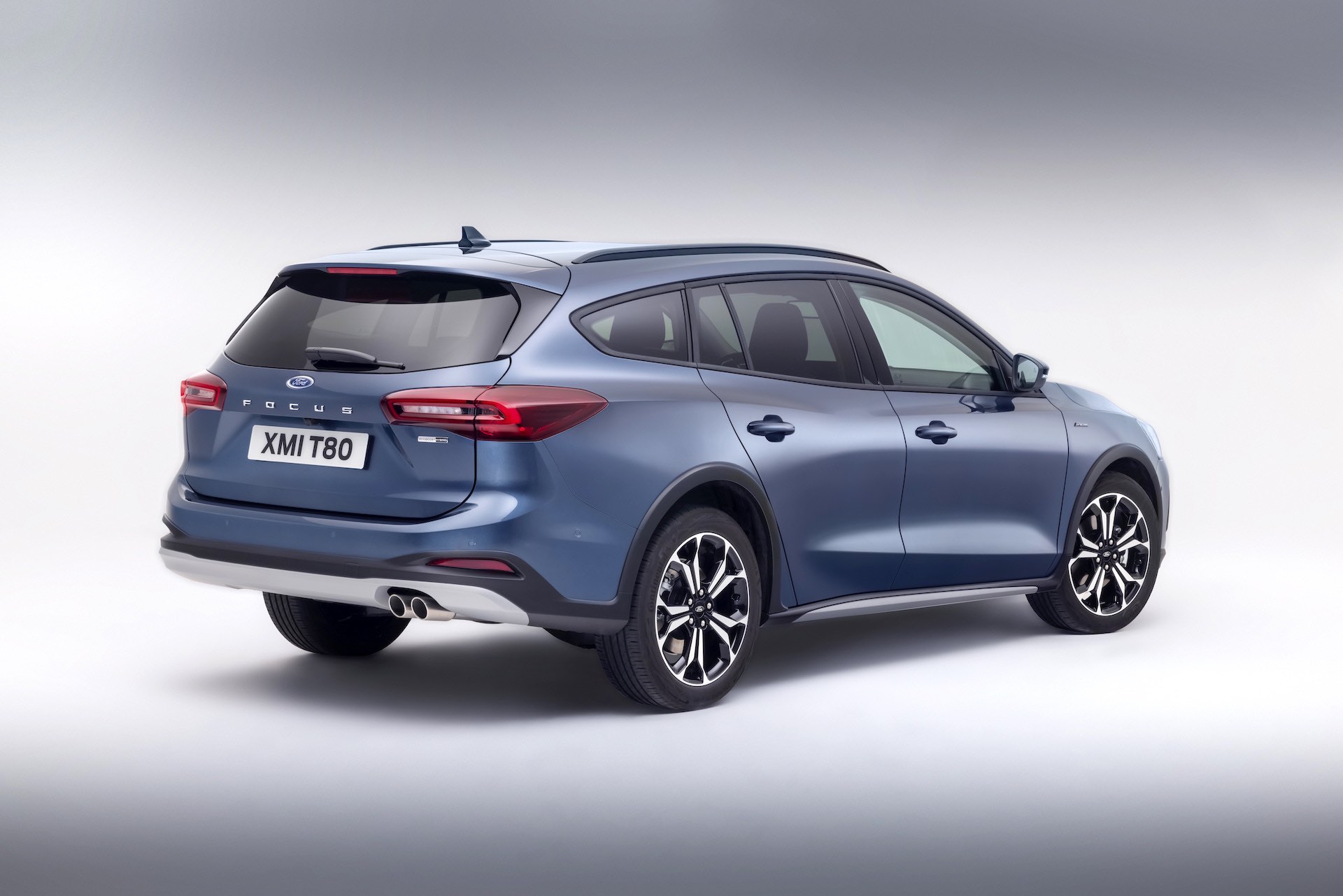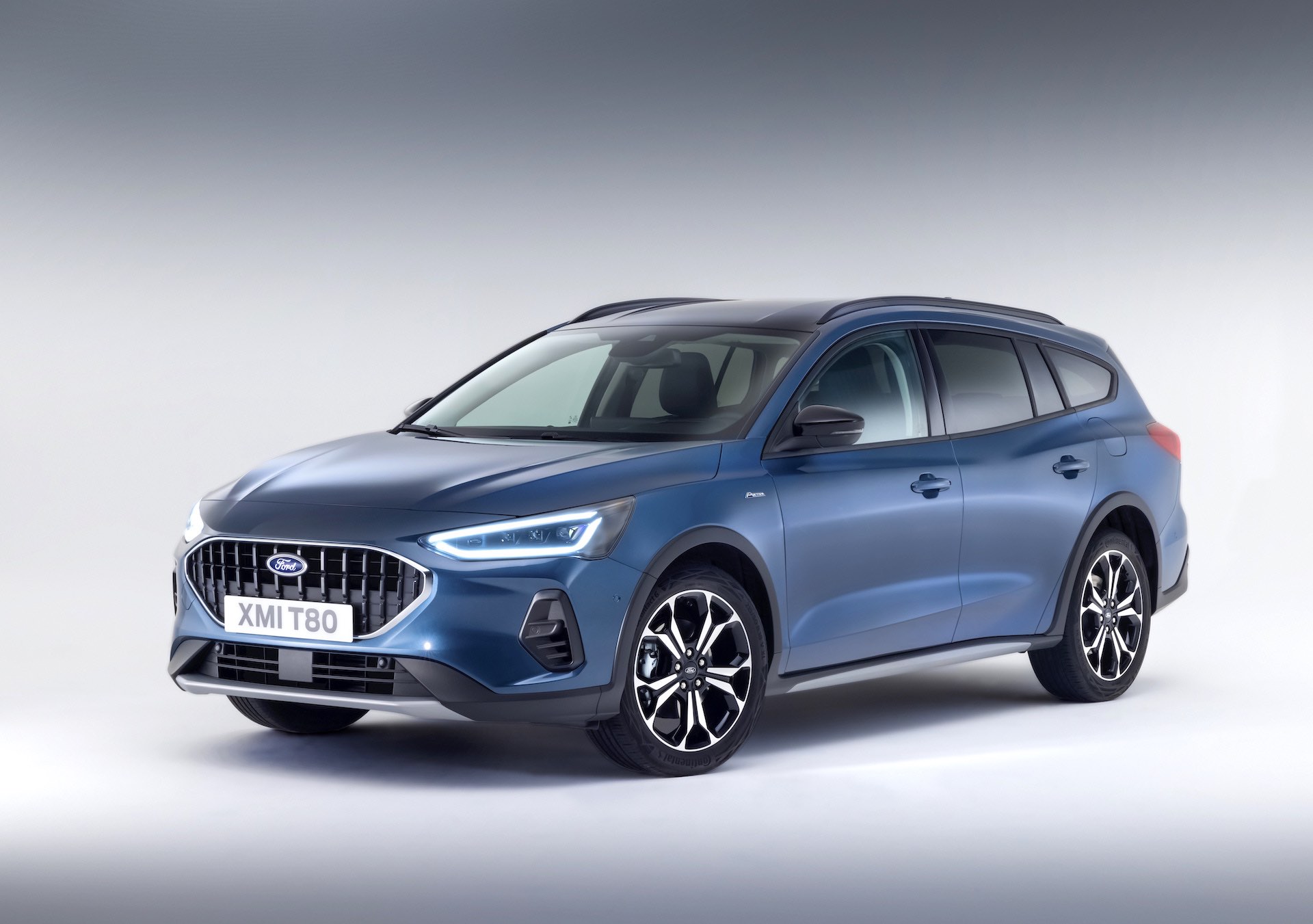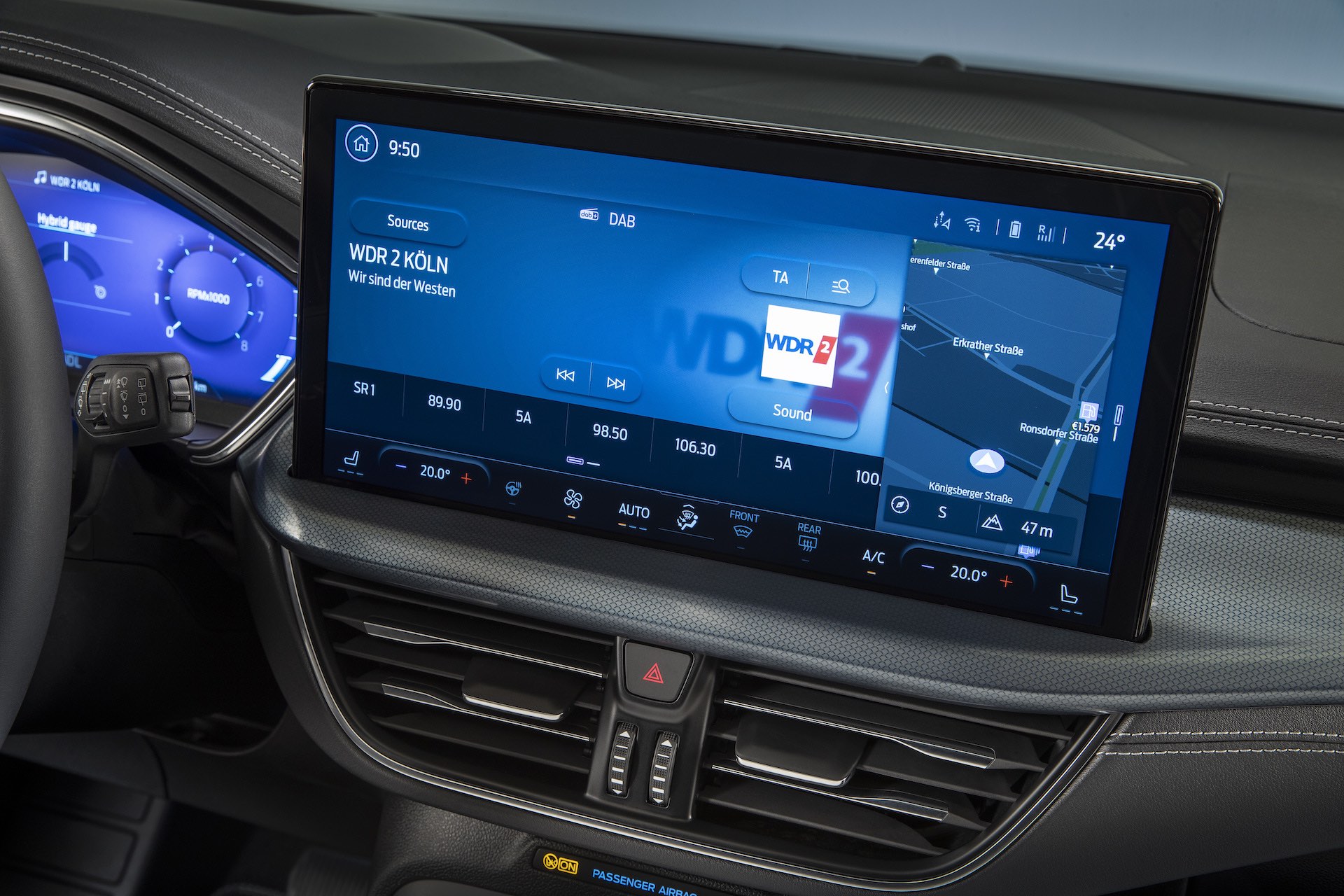Ford’s Focus doesn’t get near the European best-sellers podium these days, it was withdrawn from North America two years ago, and Ford admits the Kuga/Escape crossover is its priority these days. But even in these SUV-crazed times the Focus remains an important cog in the global Ford machine.
To help it stay important Ford has served up a mid-cycle refresh that includes only minor changes to the car’s skin but some much more substantial mods under it aimed at boosting safety, economy and showroom appeal, including an optional biggest-in-class 13.2-inch infotainment screen with Ford’s latest SYNC 4 technology.
See Also: New Ford Maverick Vs Hyundai Santa Cruz
At a glance, the 2022 Ford Focus doesn’t appear radically different to the car it replaces. Ford says it showcases a new iteration of the company’s “human-centric” design philosophy, which in this case manifests itself as a raised hood for “greater visual presence” and the relocation of the Ford blue oval badge from above the grille to slap, bang in its center. Every model gets LED headlights with integrated foglights and more distinctive daylight running lights, and the the rear LEDs feature a new light pattern.
But this time around Ford has put greater effort into creating recognisable stylistic differences Focus models. So Connected and Titanium cars get a wide upper grille with gloss chrome surround and horizontal bars (hot stamped chrome finish on Titanium).
More: Facelifted 2022 Ford Fiesta Unveiled With New Digital Gauges And Smarter Looks
Sports-themed ST-Line, meanwhile, features a gloss black honeycomb grille, a deeper lower grills and side skirts, a diffuser and rear spoiler. The Crossover-aping Active has ugly vertical grille bars and plastic body cladding, and a Vignale pack available on Titanium, ST-Line and Active models includes a satin finish upper grille and bespoke wheels.
The biggest under-hood news is the option of a seven-speed dual-clutch transmission on Focus models fitted with the 123 hp and 153 hp 48-volt mild hybrid EcoBoost fours. Despite Ford’s talk of improved efficiency, the quoted best-case 119g/km and 47.9 mpg (Imperial) figures are significantly worse than the 116g/km and 51.4 mpg it lists for the same engines with the six-speed manual. But the ability to pull off triple downshifts (easier on ST-Line with its standard paddle shifters), and that extra gear ratio means the two-pedal cars should at least be fun to drive.
The ST Hot Hatch Returns
Not as fun, though, as the Focus ST, which returns to duke it out with hot hatch rivals like the VW Golf GTi. The 276-hp 2.3-liter EcoBoost is carried over unchanged, but there’s a new design of alloy wheel, a new Mean Green paint option, and inside, the cabin a new set of performance seats developed in-house replace the old car’s Recaros. Dropping those big-name chairs hasn’t made the ST any cheaper. While the £22,465 entry level Trend is only £250 more than the Zetec it replaces, and the ST-Line incurs a bearable £600 hike to £24,545, the real ST now costs £33,885, which represents a steep £3630 jump over the 2020 car.
Here’s Something For The Misers
Buyers not convinced about the viability of splashing for mild-hybrid tech, let alone a 276-hp hot hatch version of the Focus can specify 98 hp and 123 hp non-hybrid 1.0-liter EcoBoosts mated exclusively to a six-speed manual (and only in 123-hp form in the UK). And for people who just can’t kick their diesel habit, Ford’s EcoBlue 1.5 is available in 94 and 118 hp guises with a choice of six-speed manual or eight-speed auto transmissions in some markets (but 118-hp and auto-only in the UK).
For many customers though, what’s going on in the dashboard is every bit as important as what’s going on under the bonnet. Which is why the new Focus gets Ford’s latest Sync 4 communication system with access to online services, the ability to accept over-air updates and be controlled via the FordPass smartphone app, and a large 13.2-inch central touchscreen. Ford claims that the interface is now more intuitive, but plenty of people will disagree when they hear that the hard keys for heating and ventilation have been canned in favour of in-screen controls.
More Electronic Safety Aids
And since safety ranks nearly as high as connectivity on many buyers’ priority lists these days, Ford hasn’t forgotten to bolster the Focus’s arsenal of protective technologies, and fill in some important omissions, including blind spot monitoring and intersection assist that you can bet customers were asking for.
What you probably didn’t guess that Focus wagon customers were asking for was a new kind of close-cropped trunk carpet that’s easier to clean, an adjustable load floor with a central hinge that can be folded to crate two trunk compartments, and wet zone for storing wet suits and umbrellas. But Ford says it’s added them all due to customer demand.
Small Improvements, Same Solid Base
There’s nothing about the new Focus that jumps out and tells you this car is suddenly going to leap head and shoulders above rivals like the Mk8 VW Golf in the sales charts. It looks mostly the same, the interior screen might be bigger but the fairly ordinary interior is largely carried over, and there are no groundbreaking updates under the hood. But Ford hasn’t messed with the good bits about the old car either, so it’ll still be great to drive, it’s well equipped and pretty roomy.




